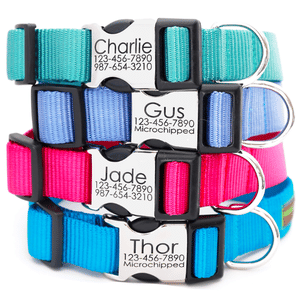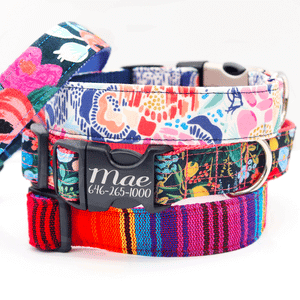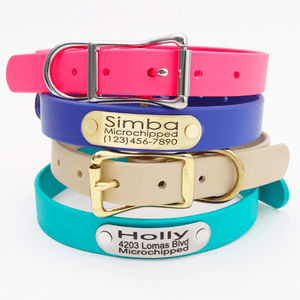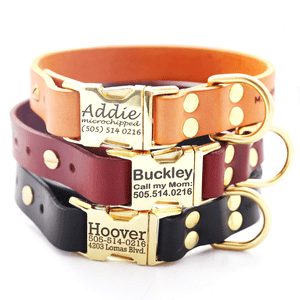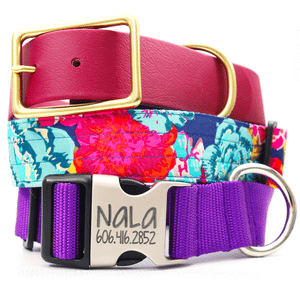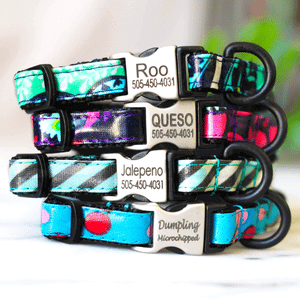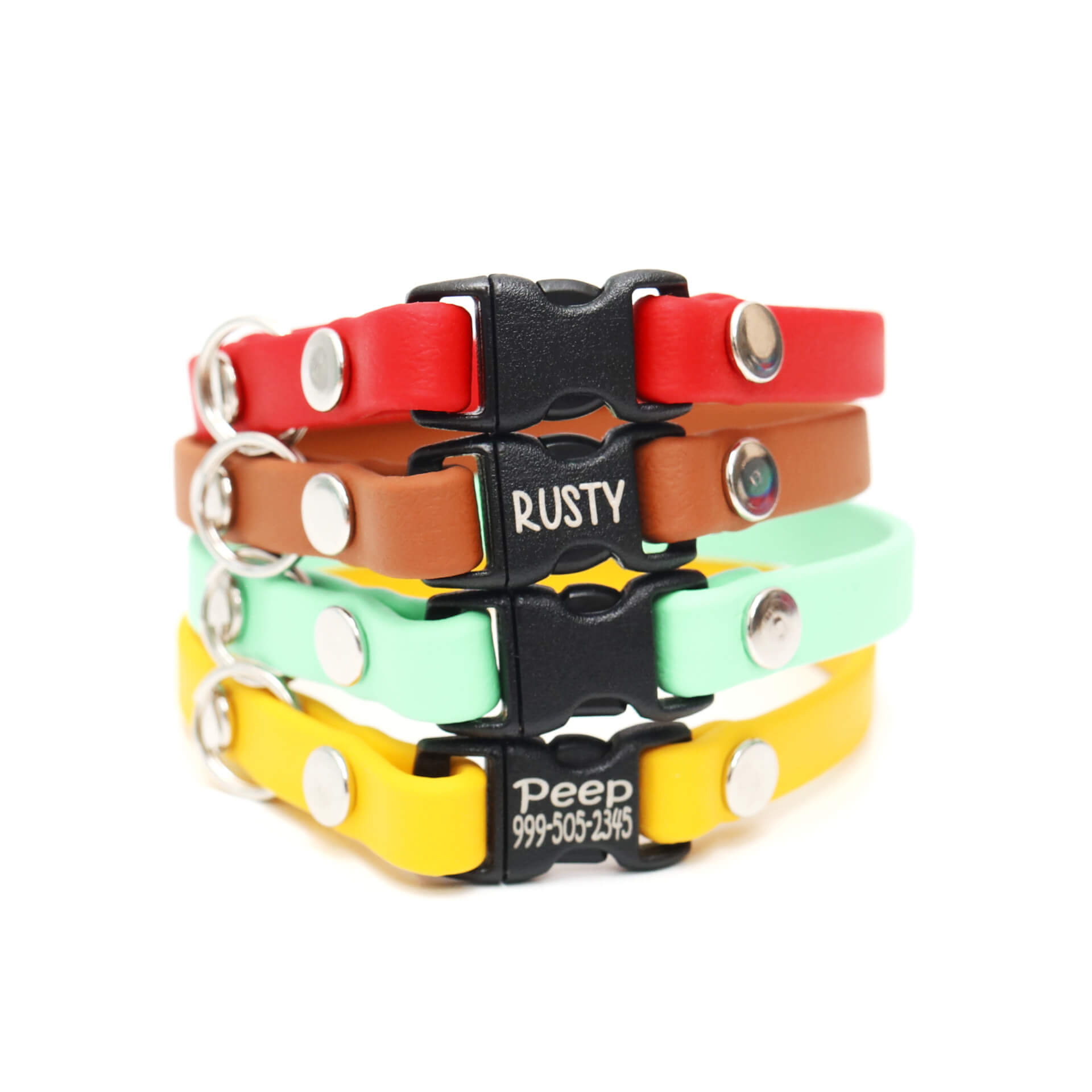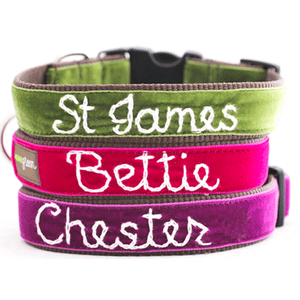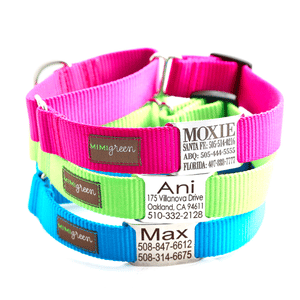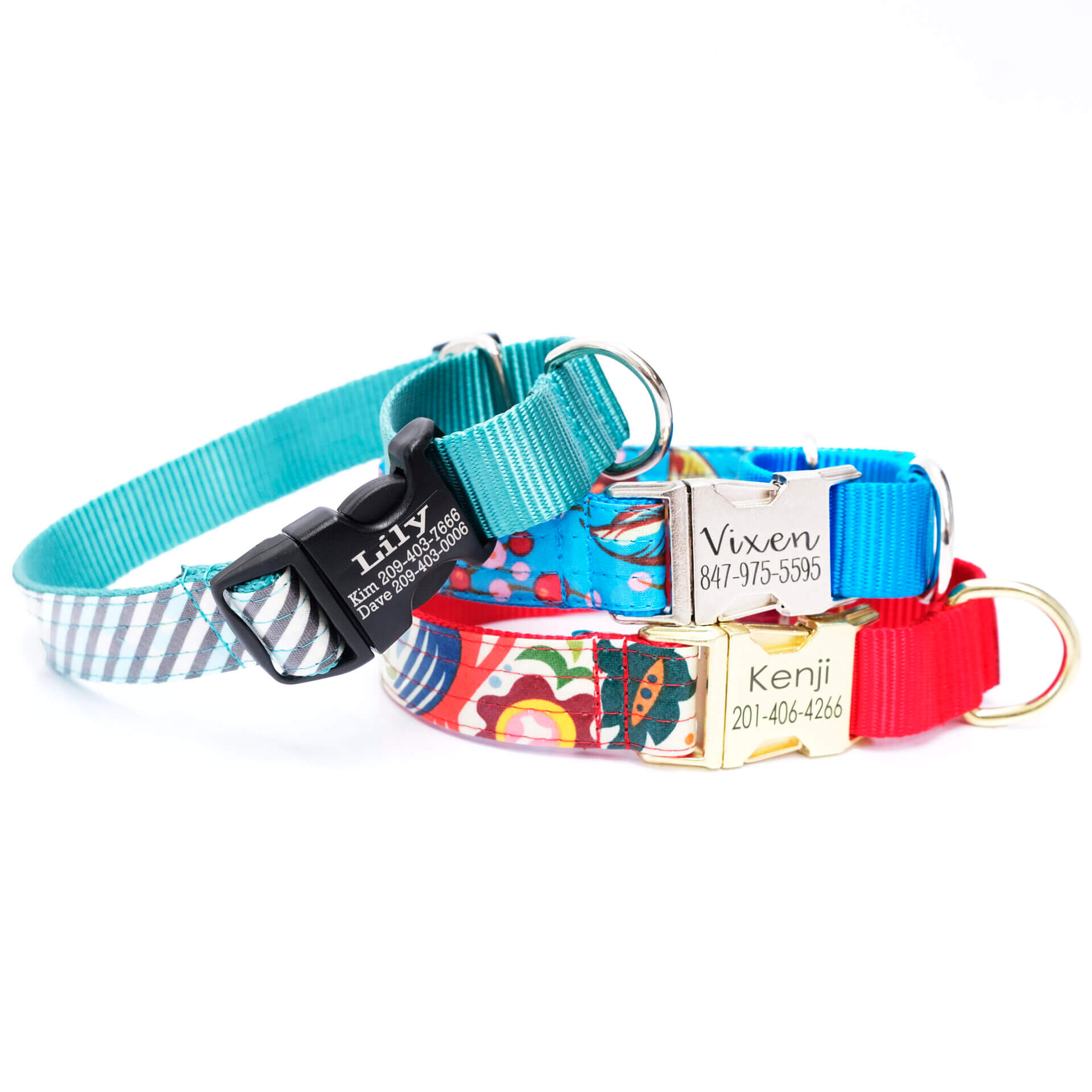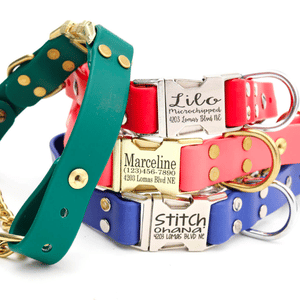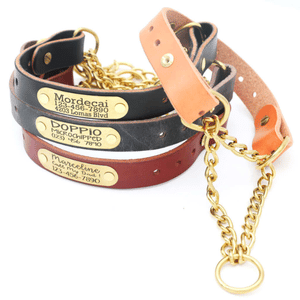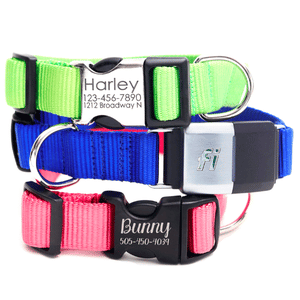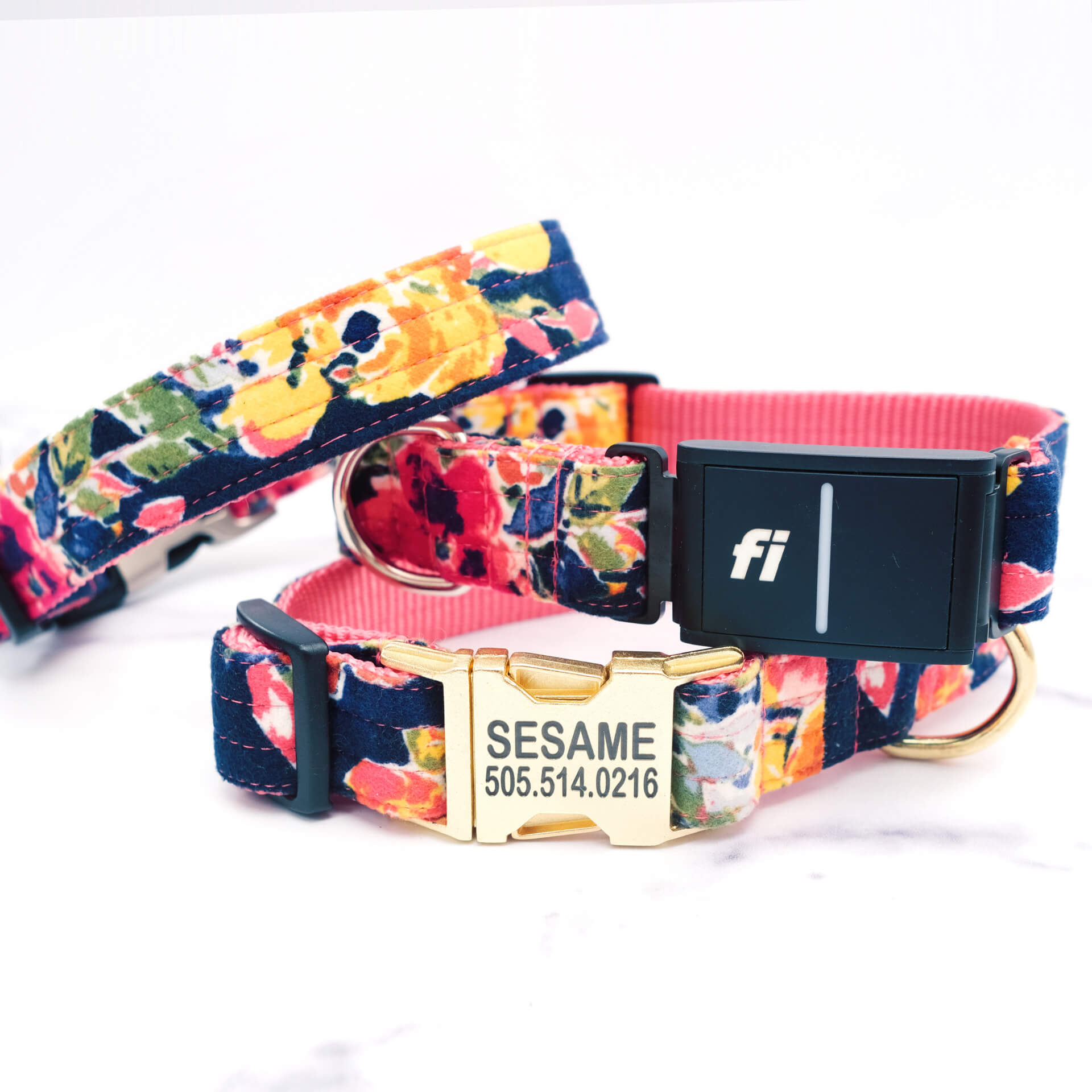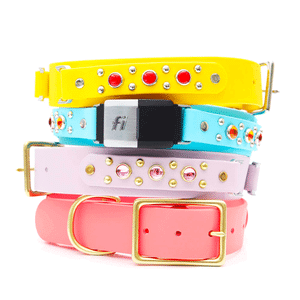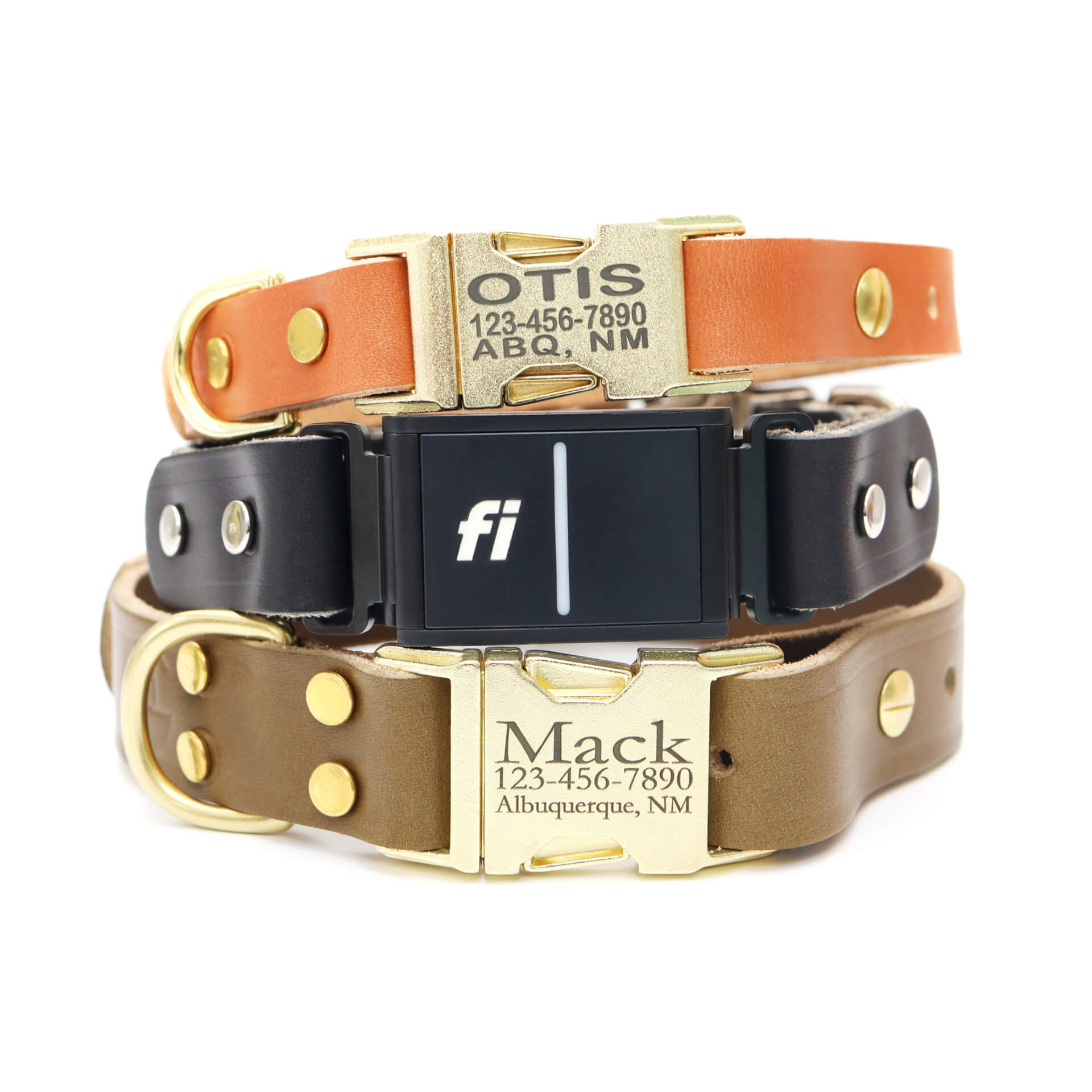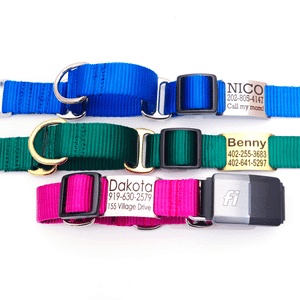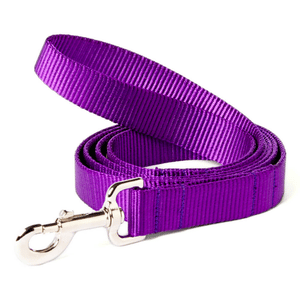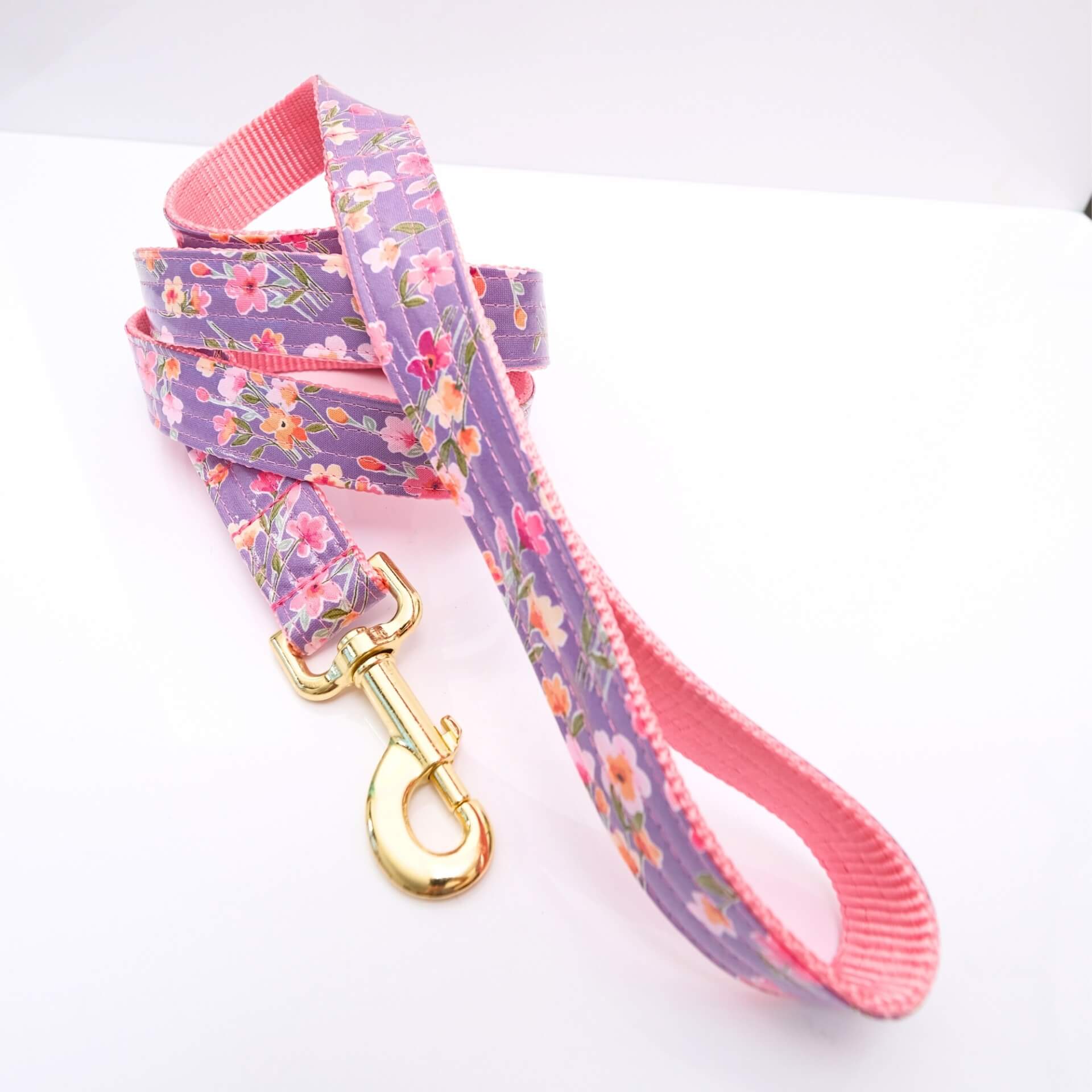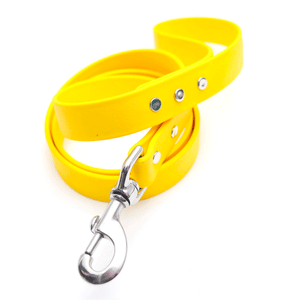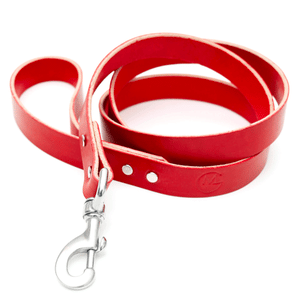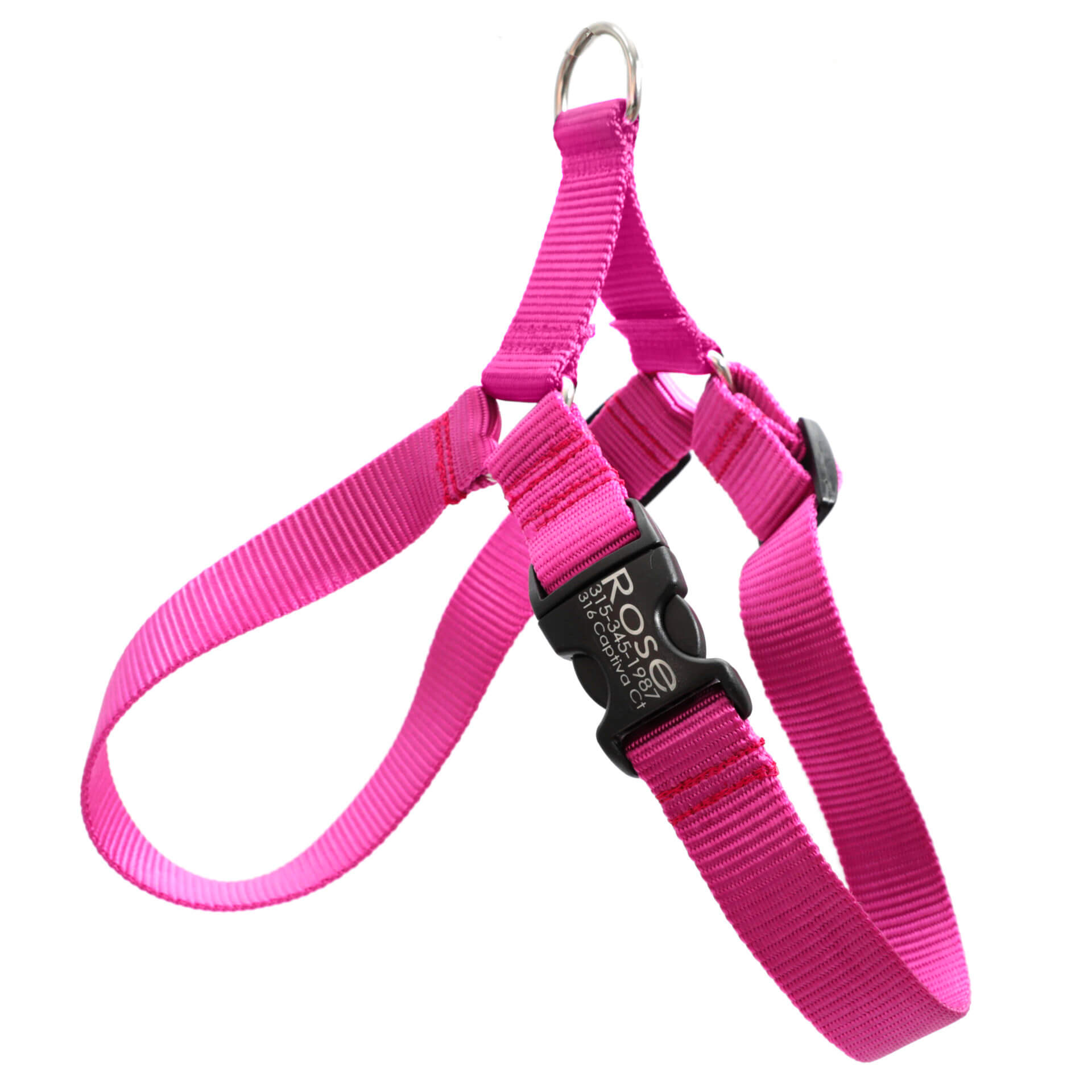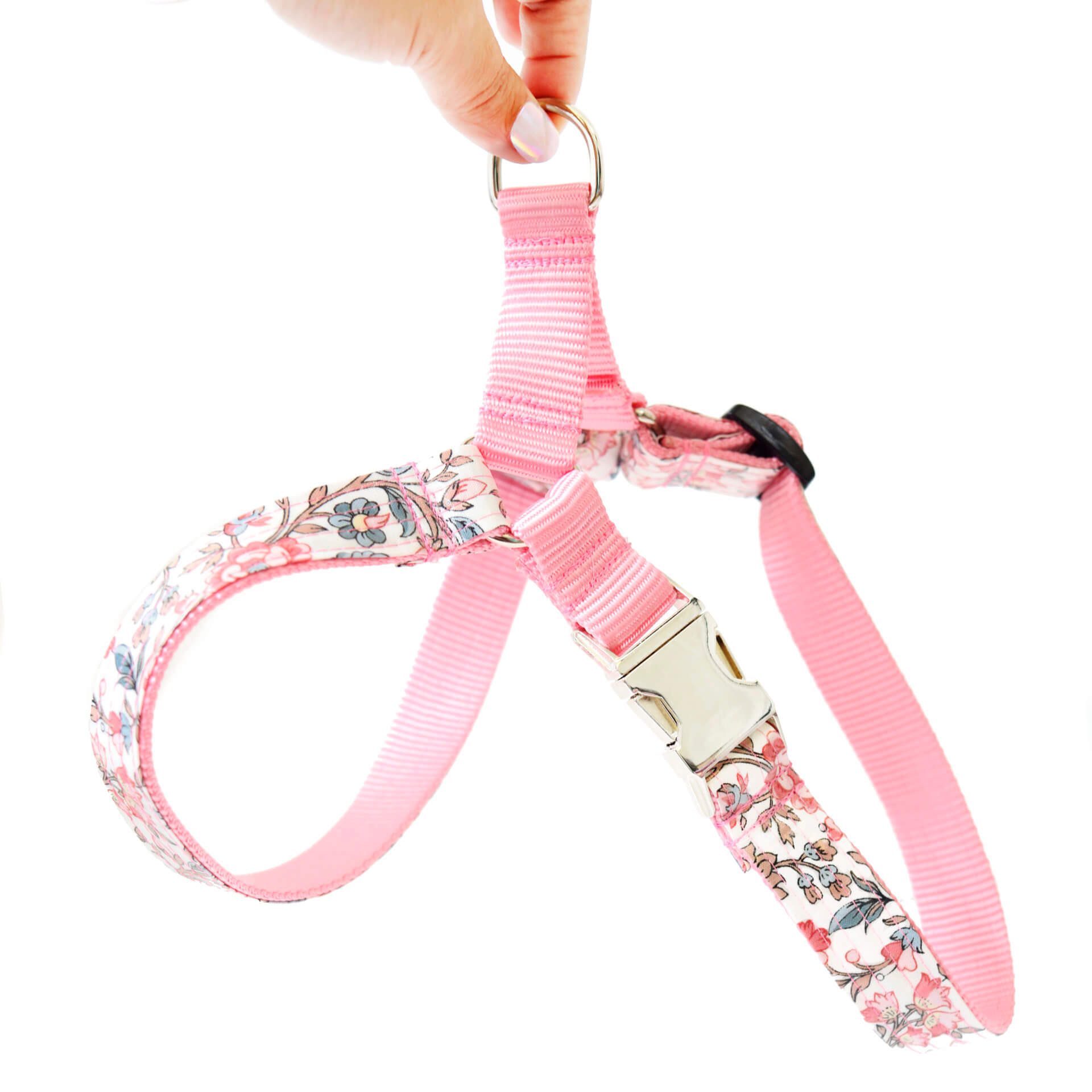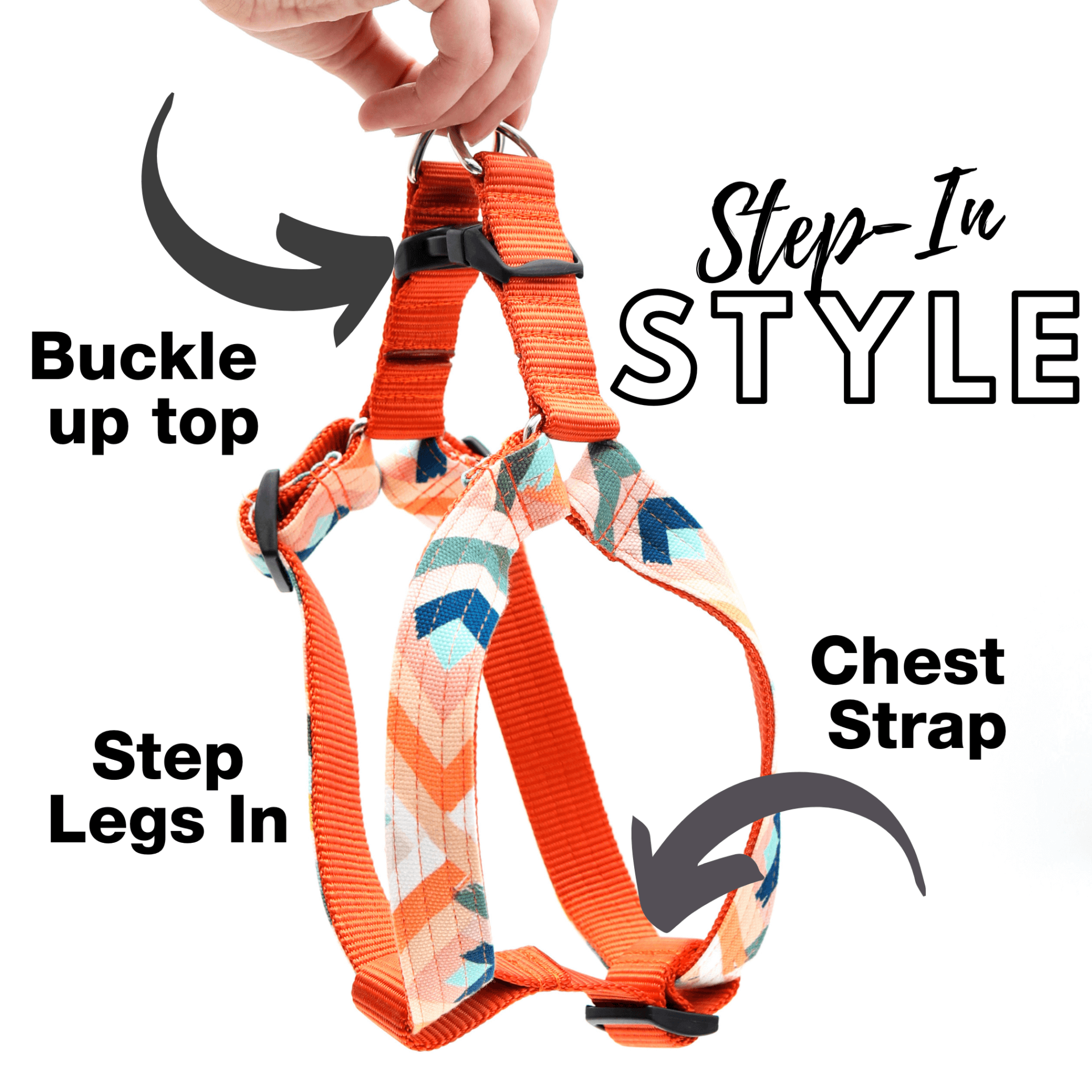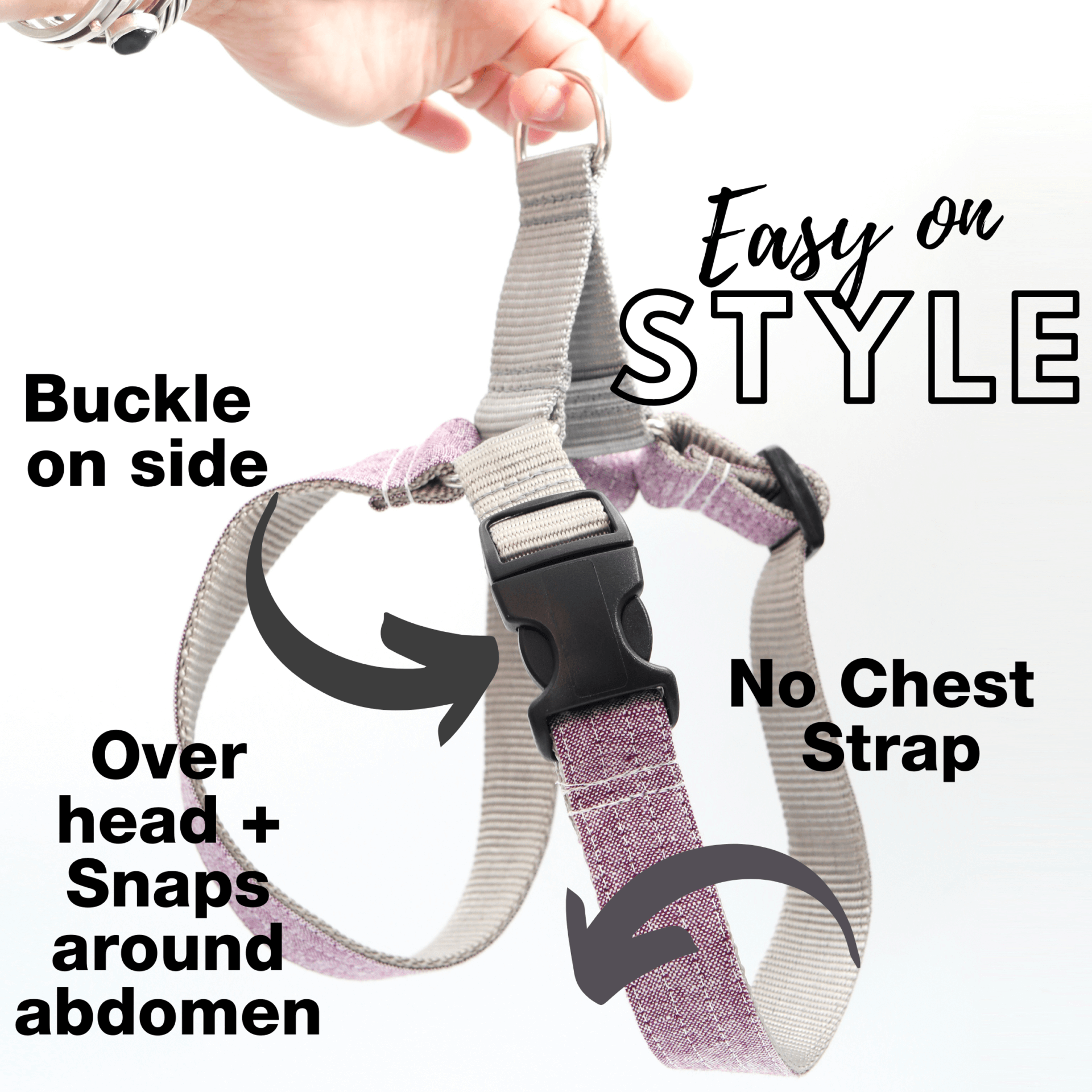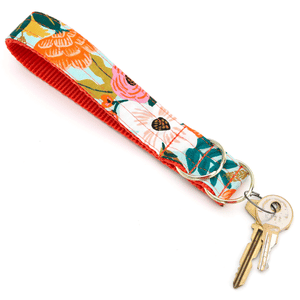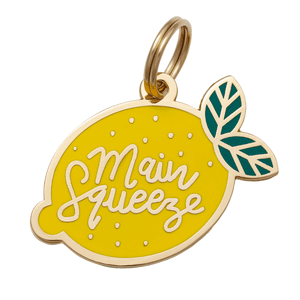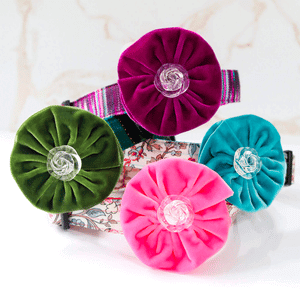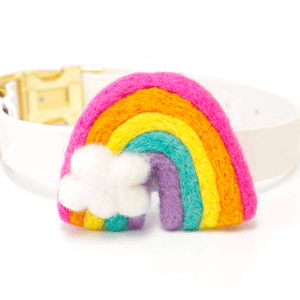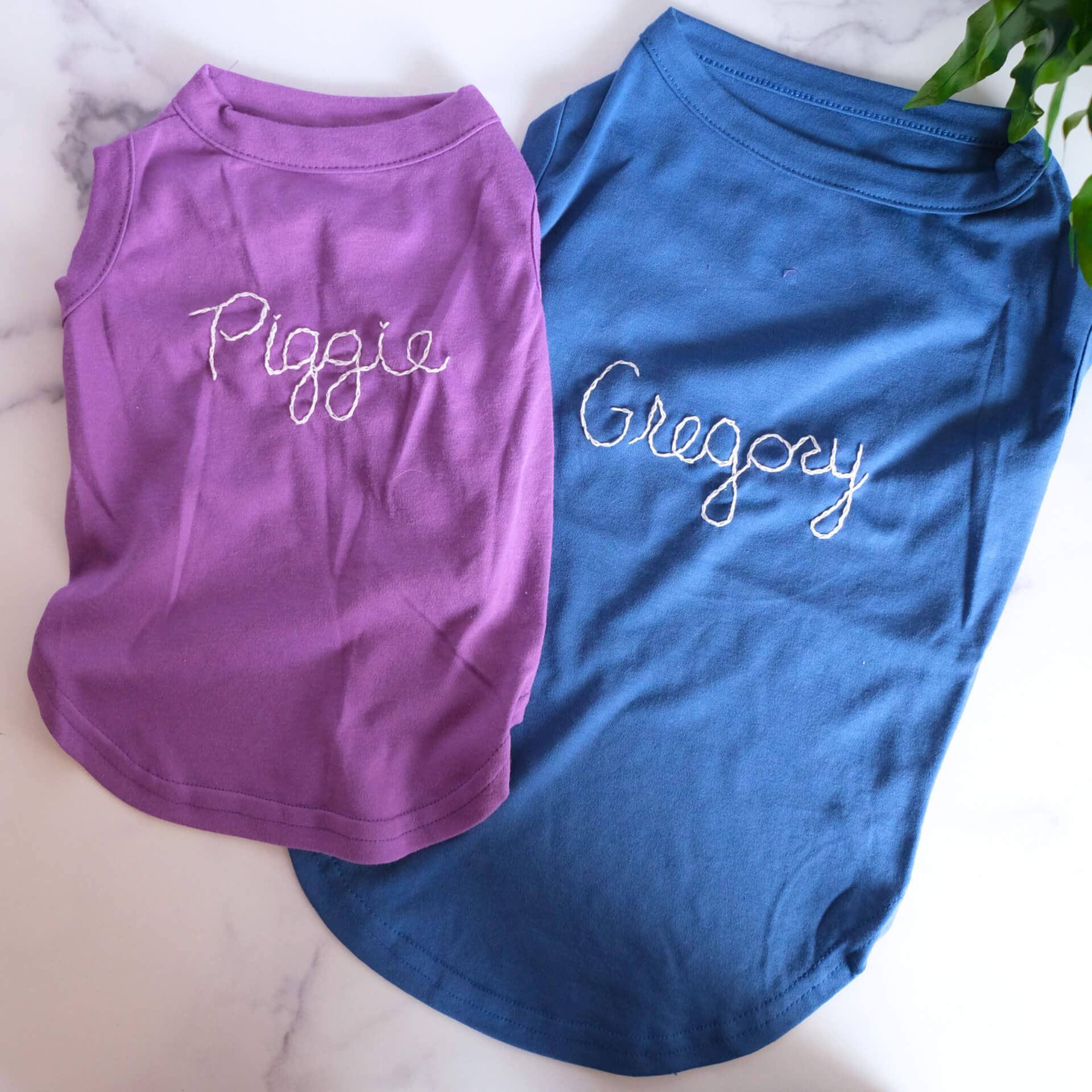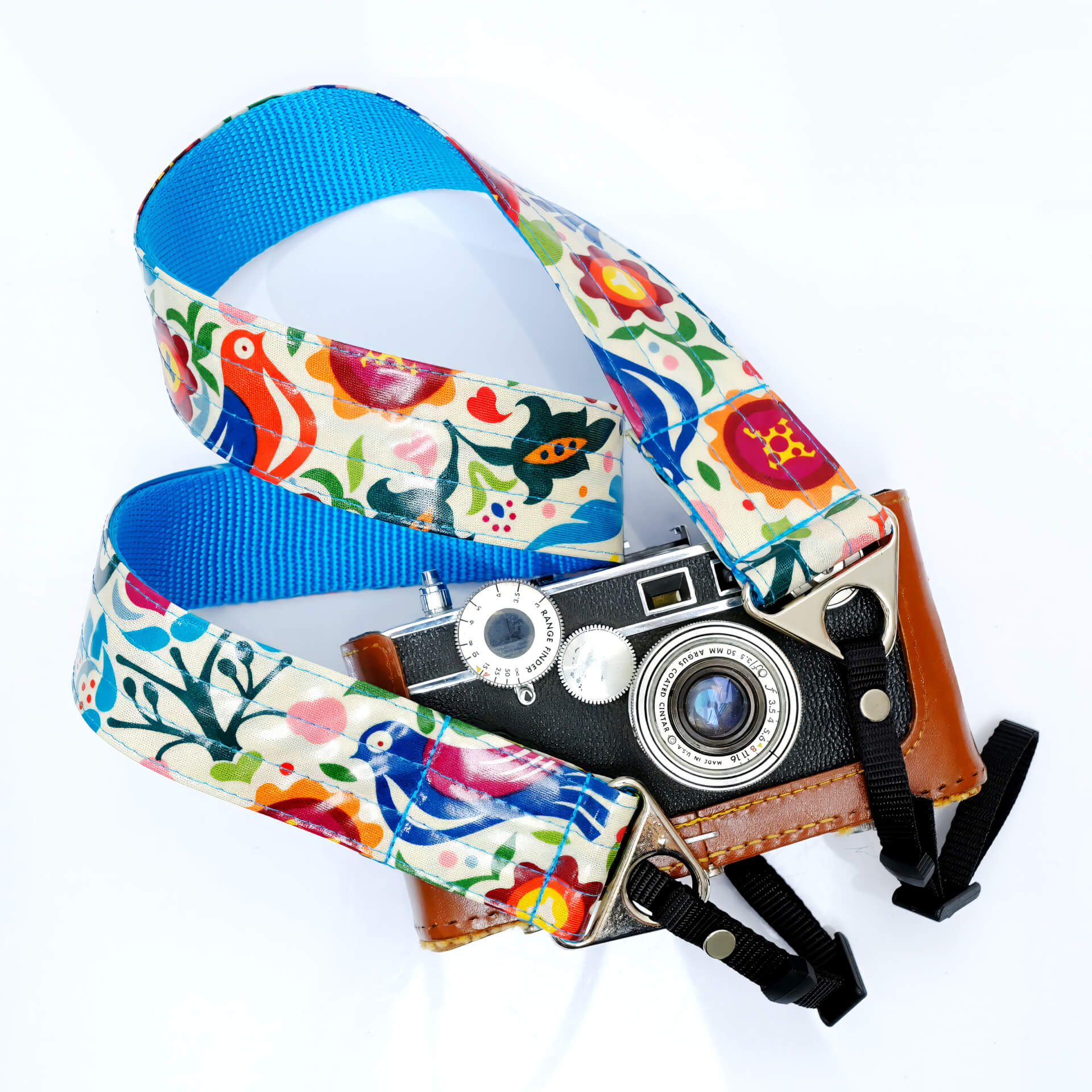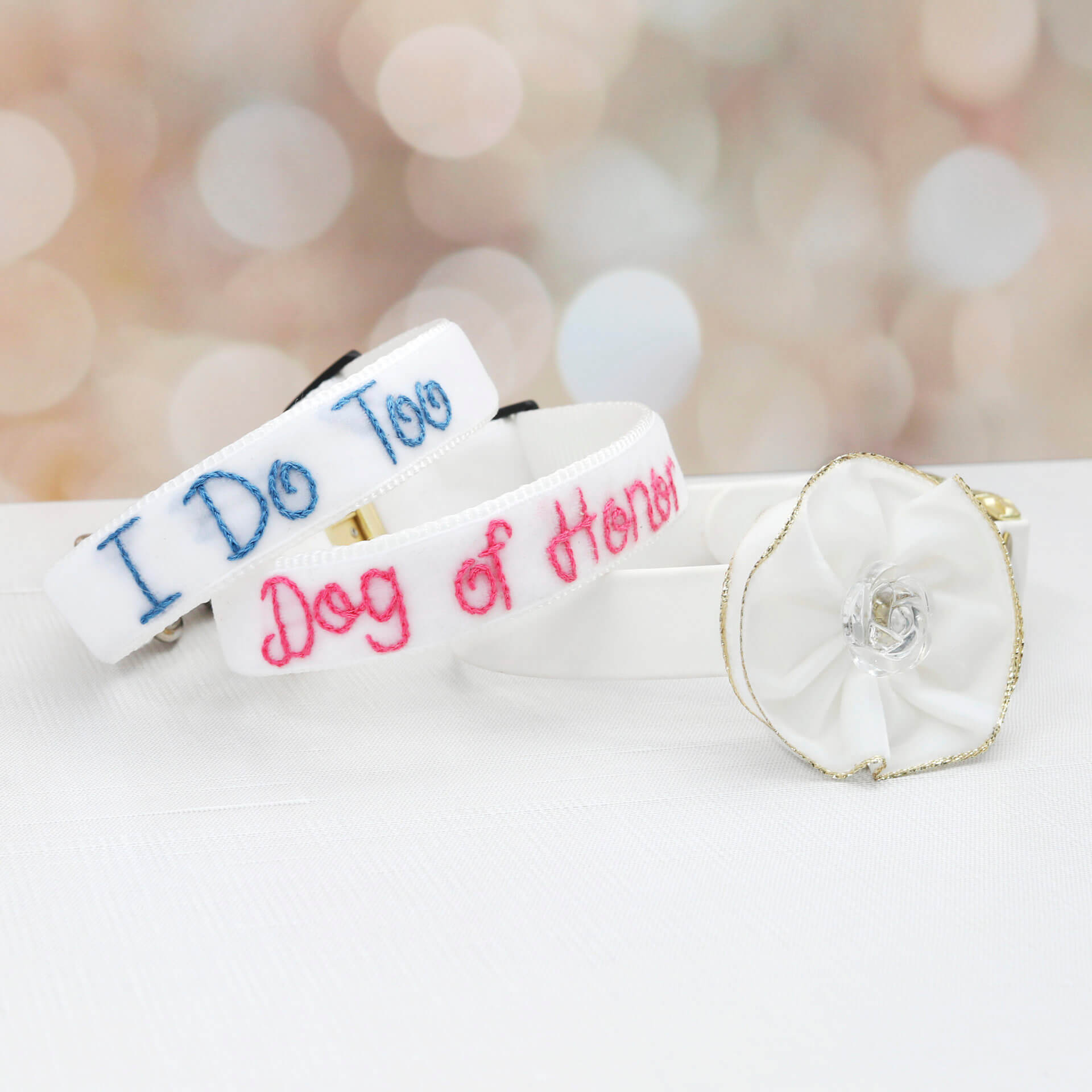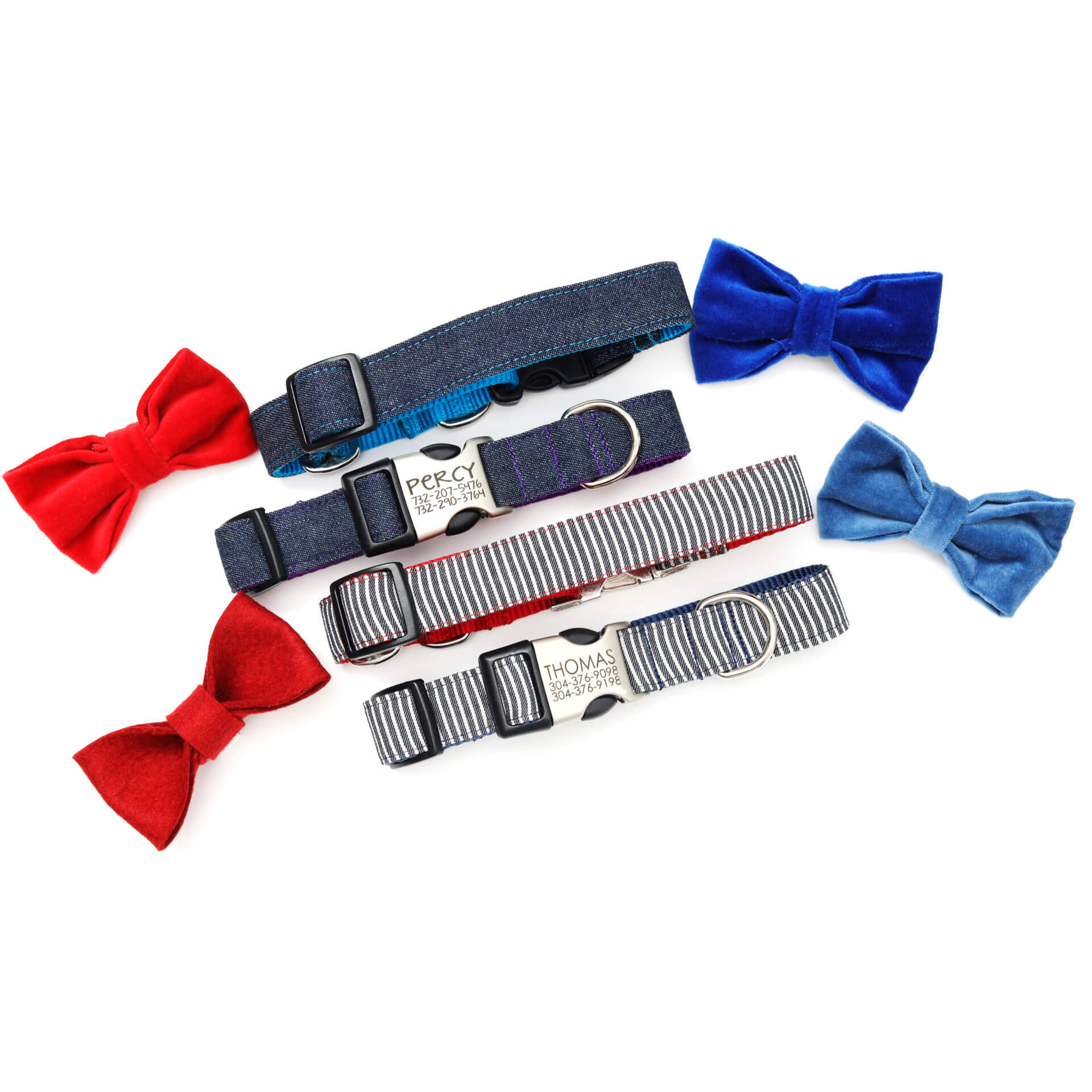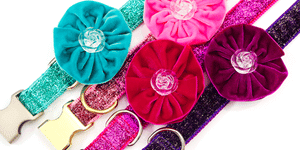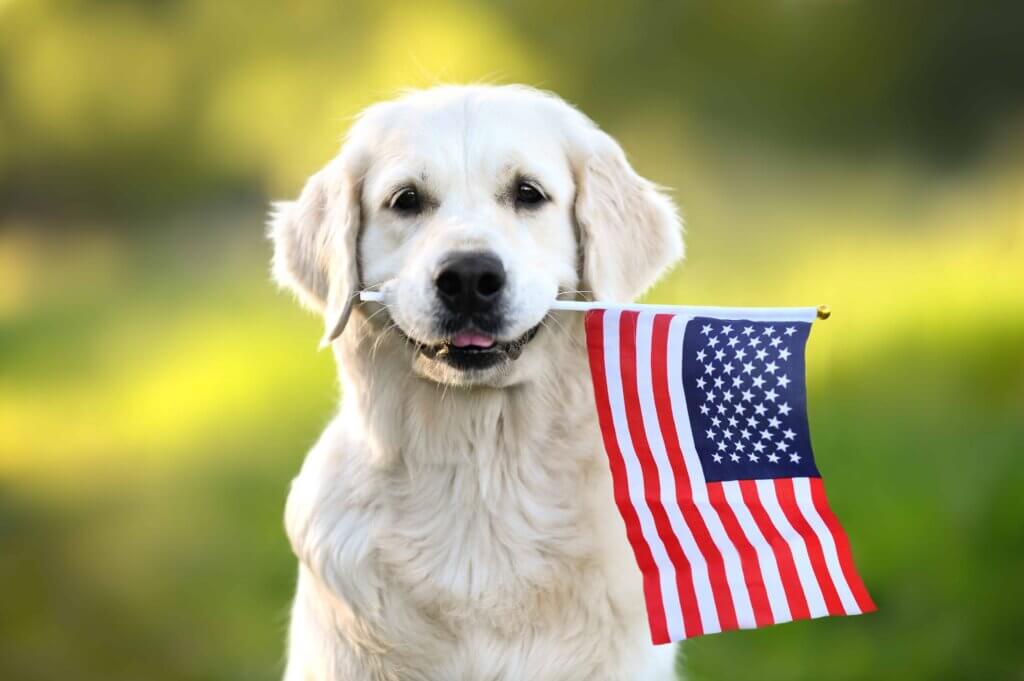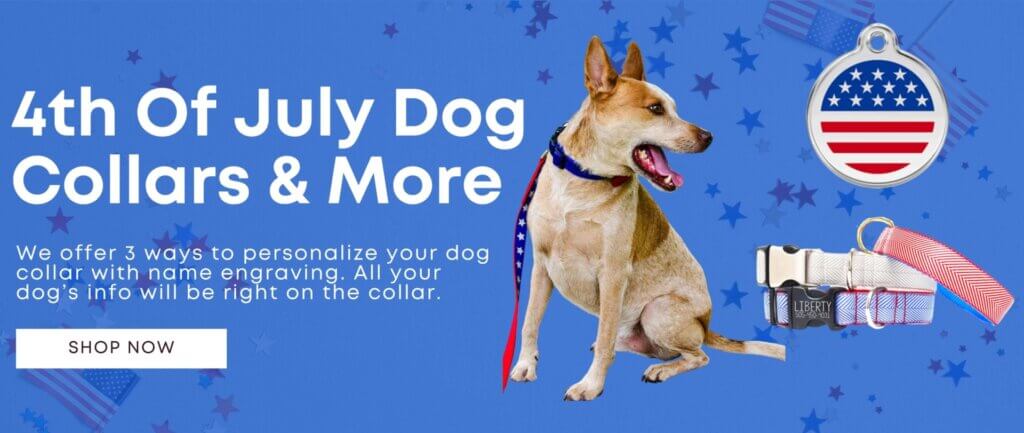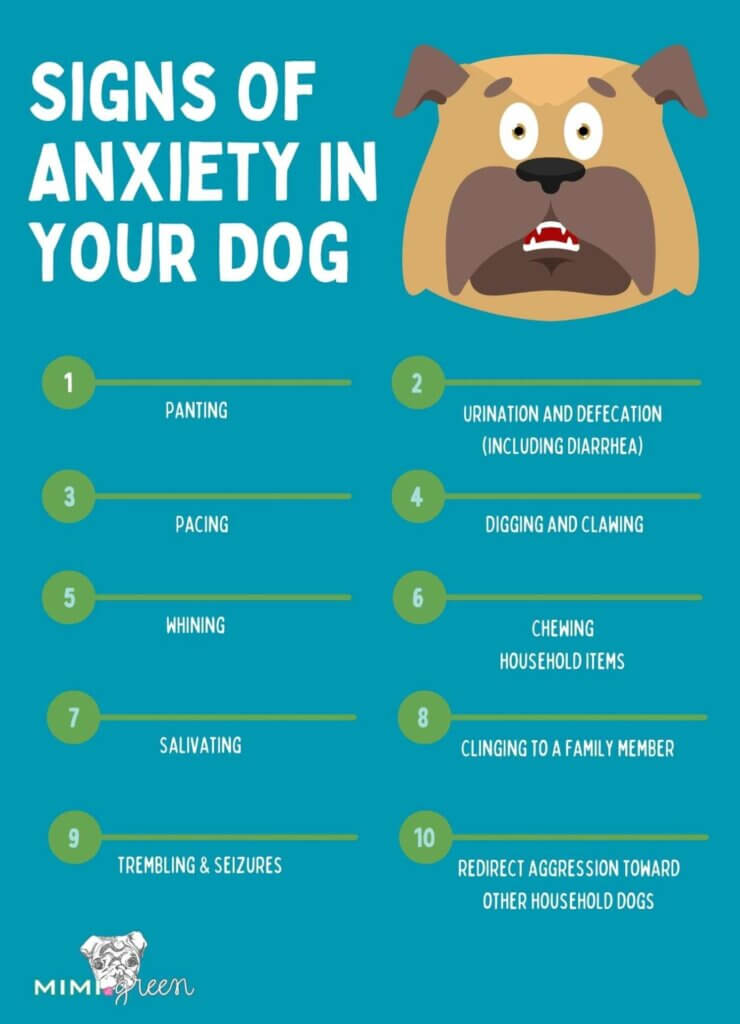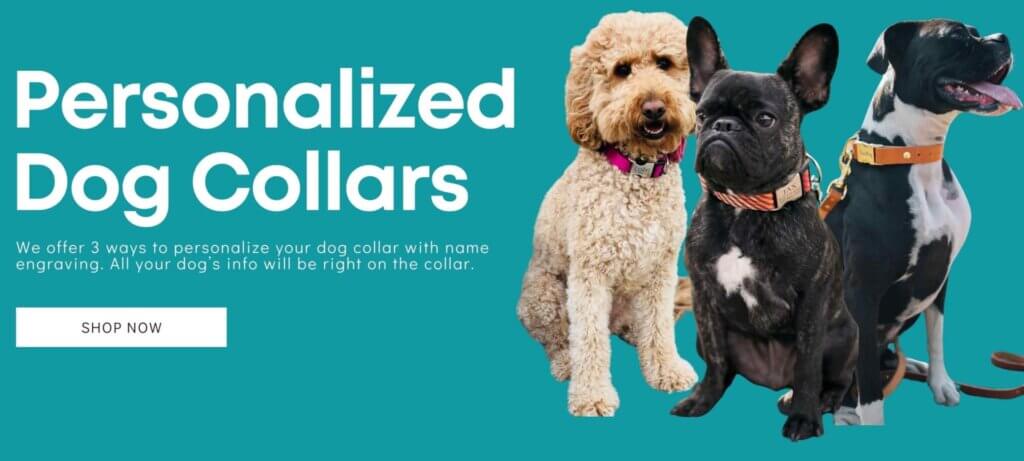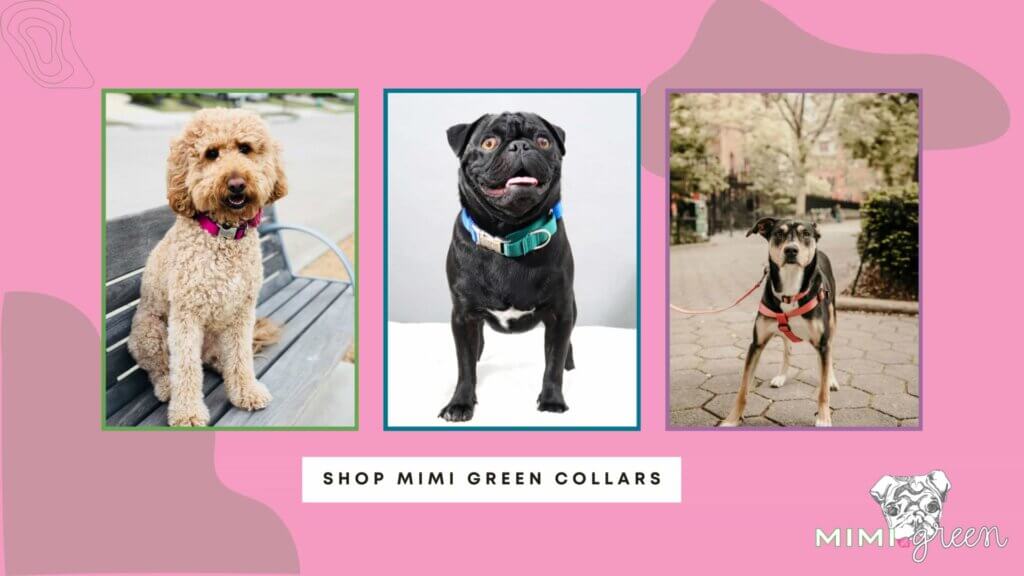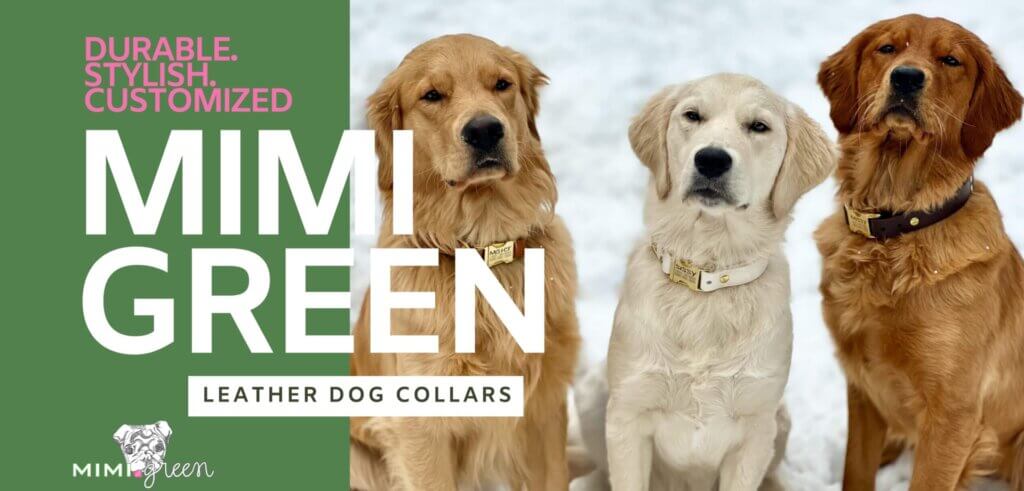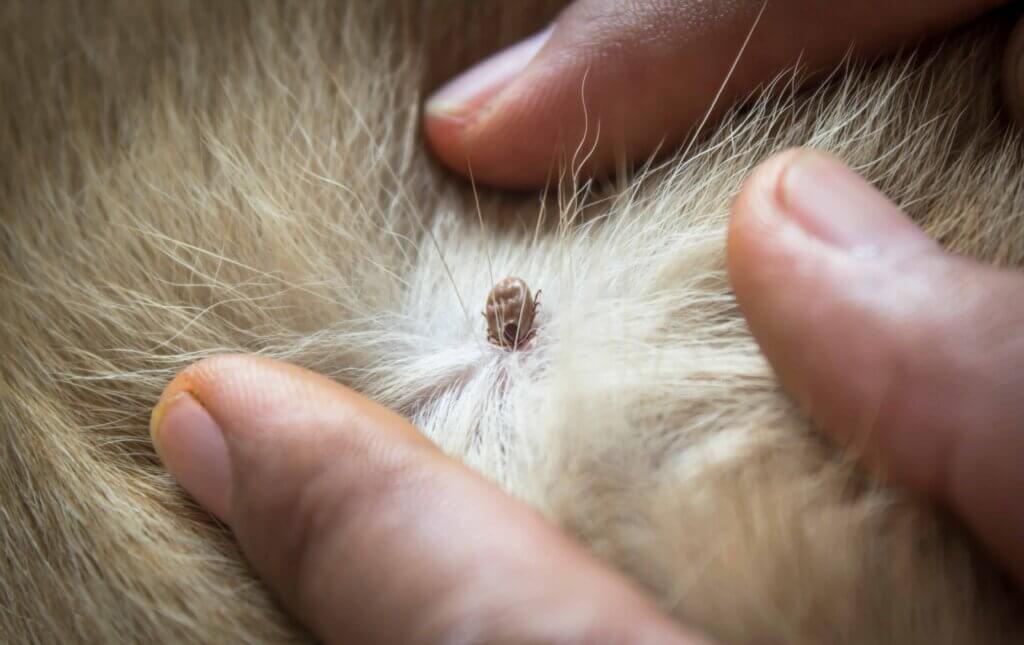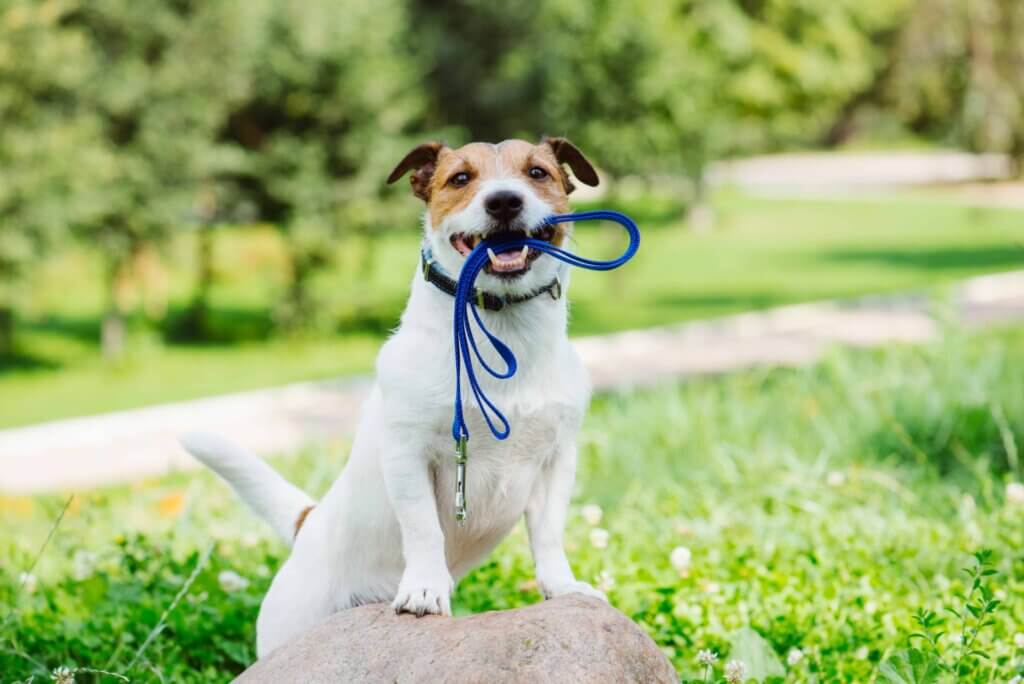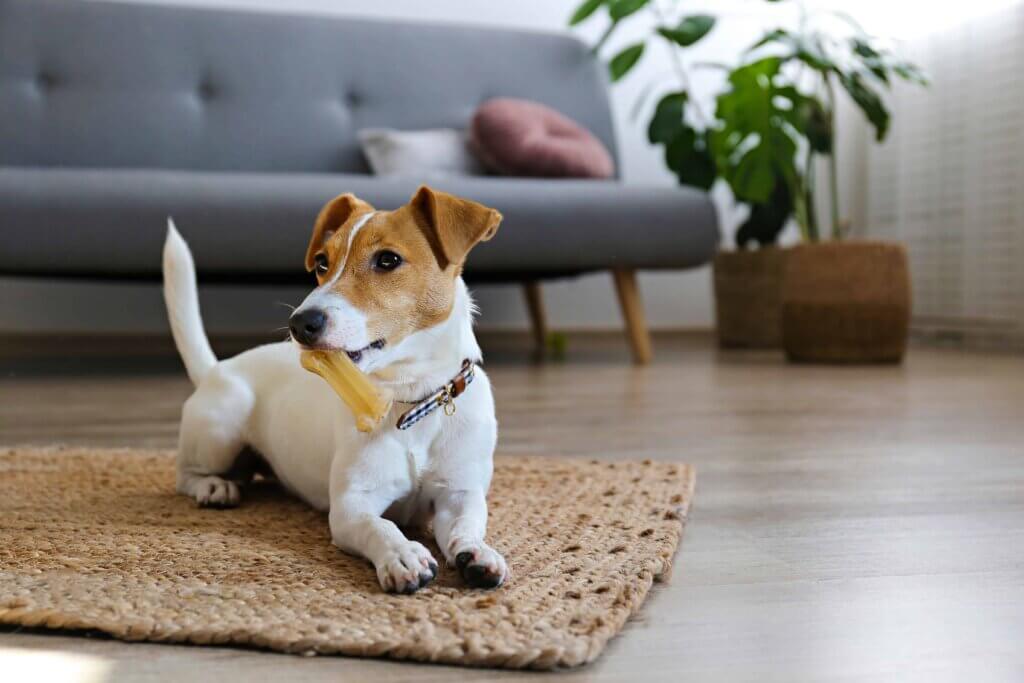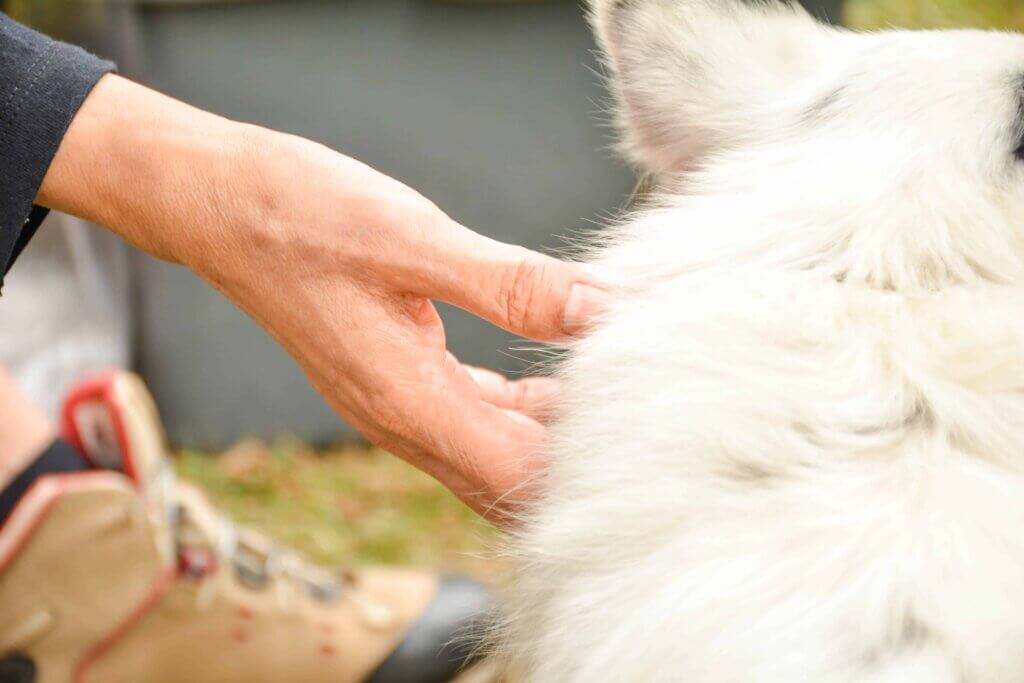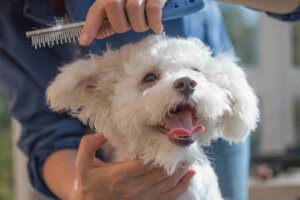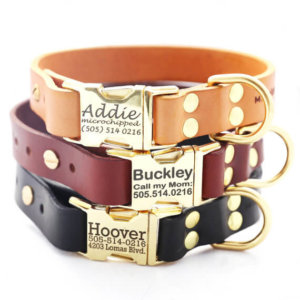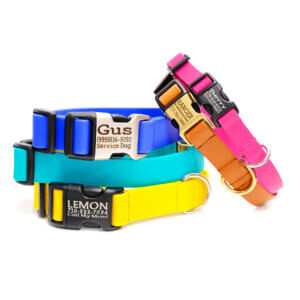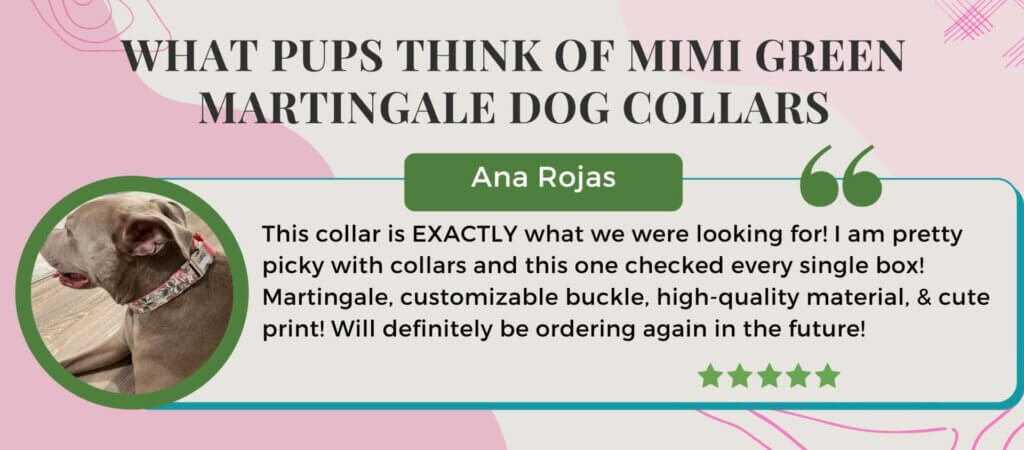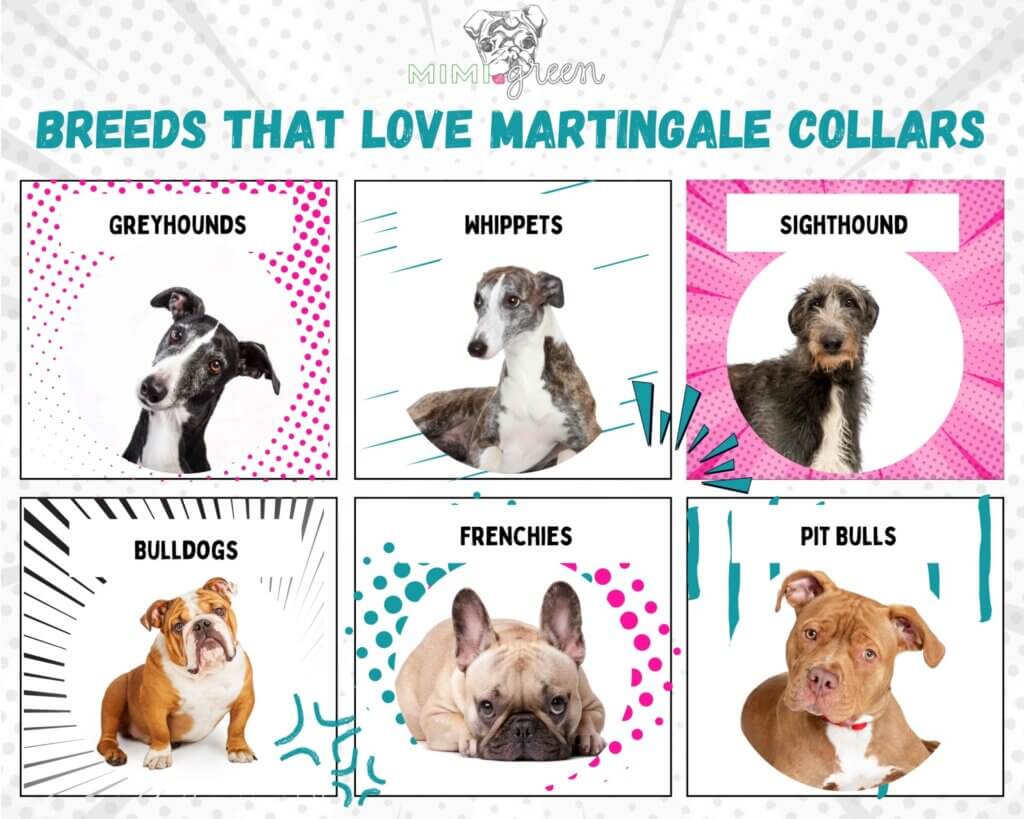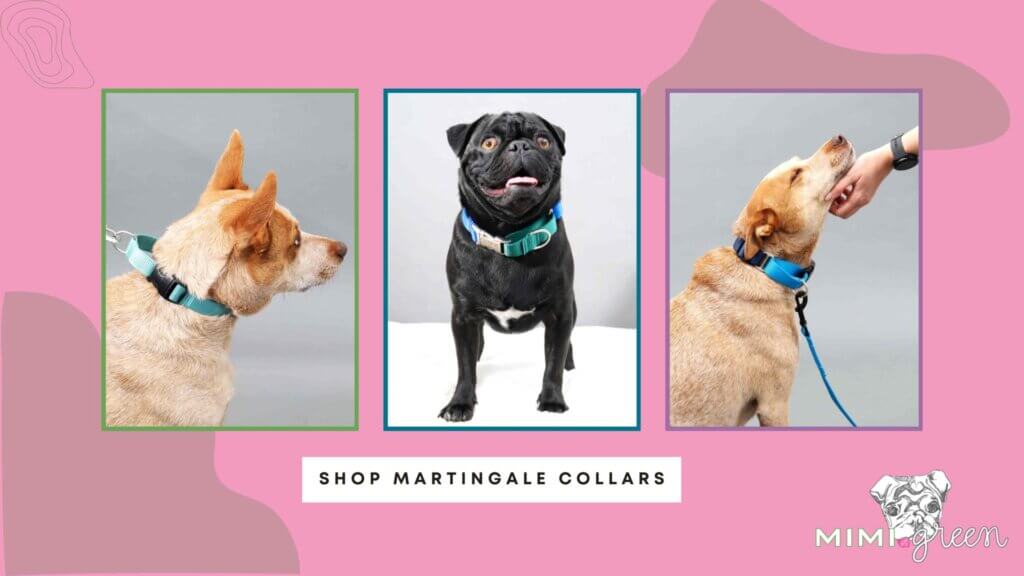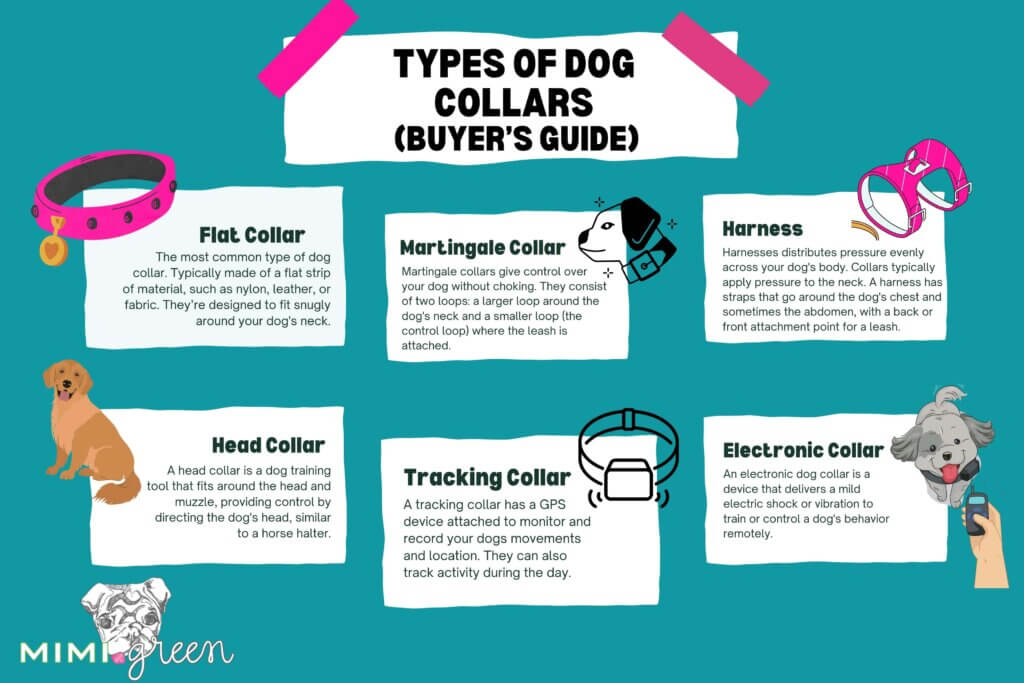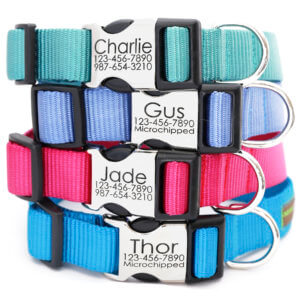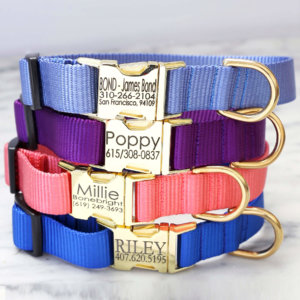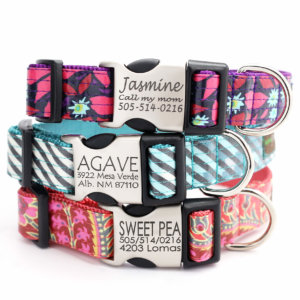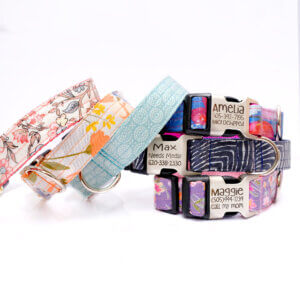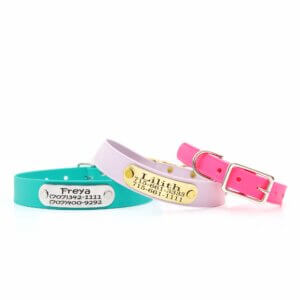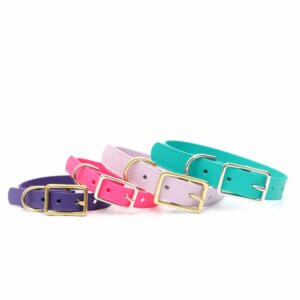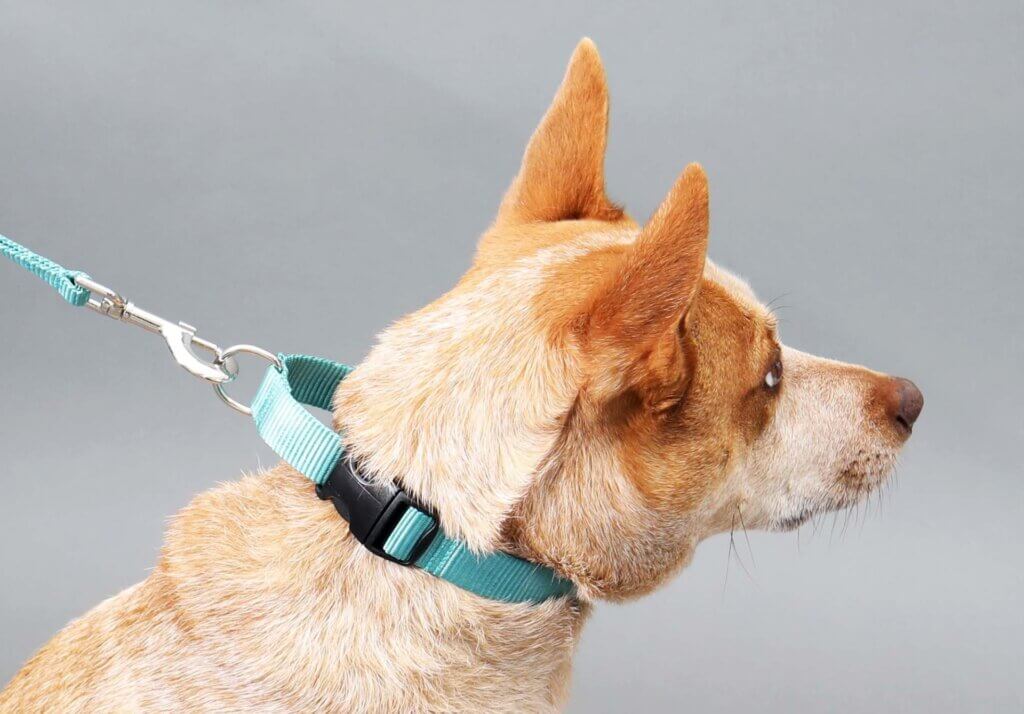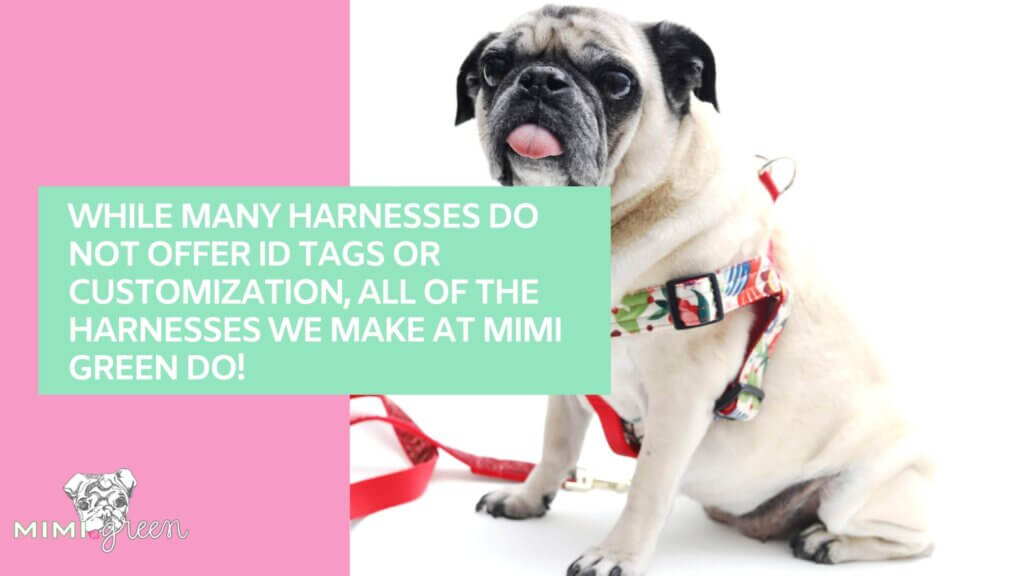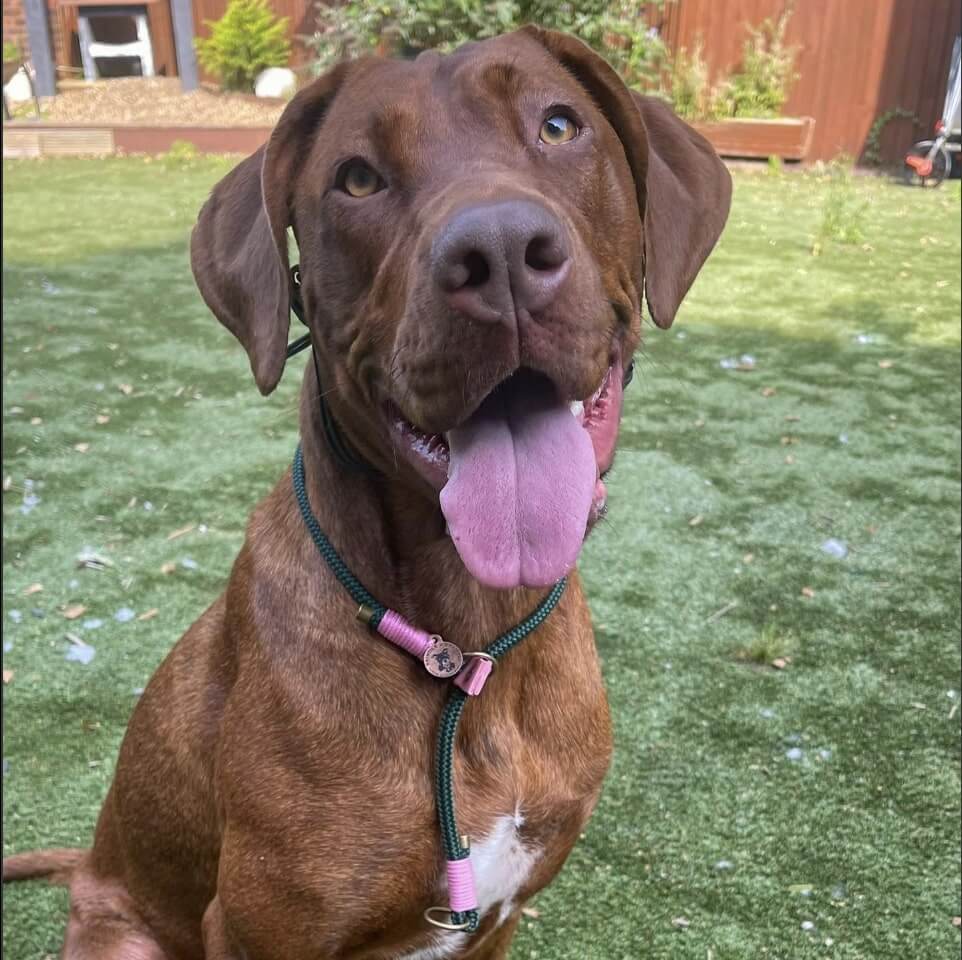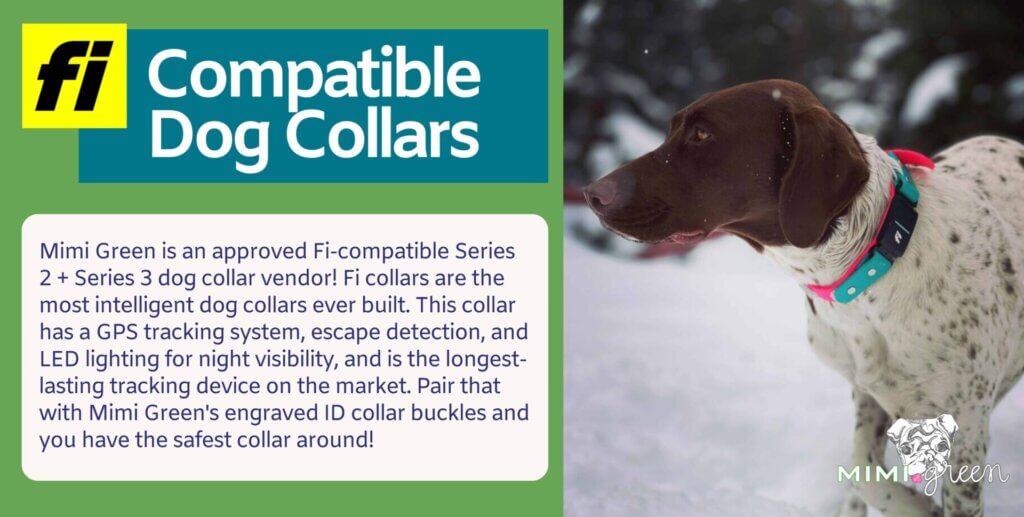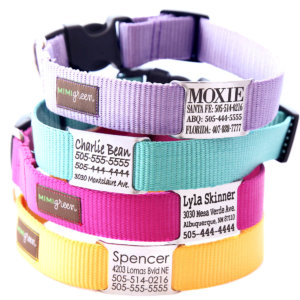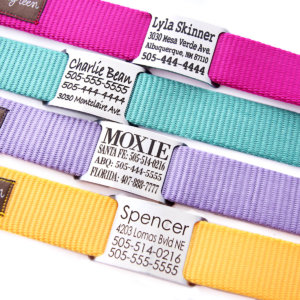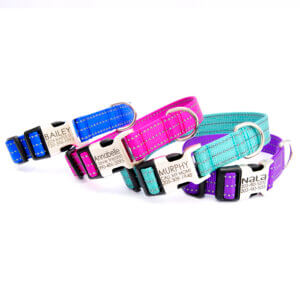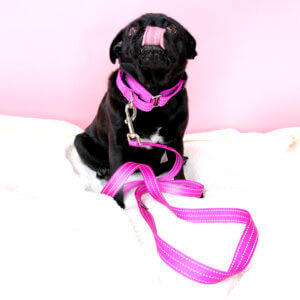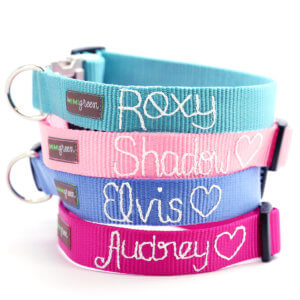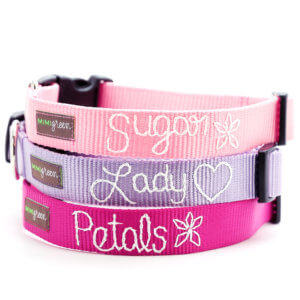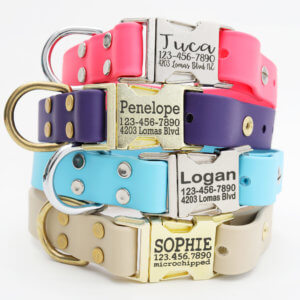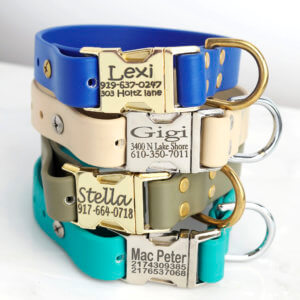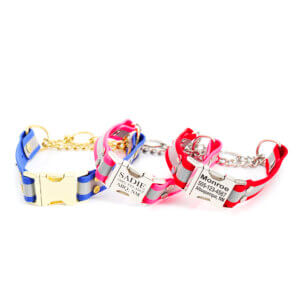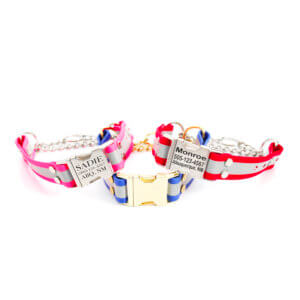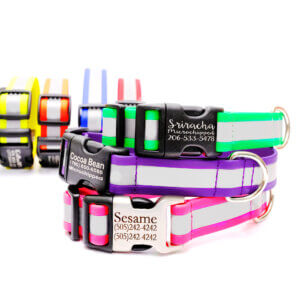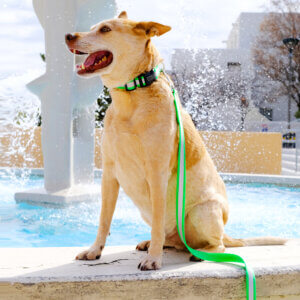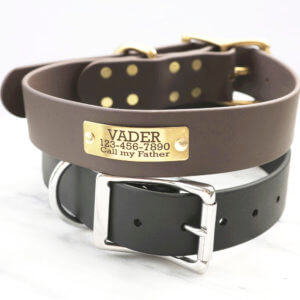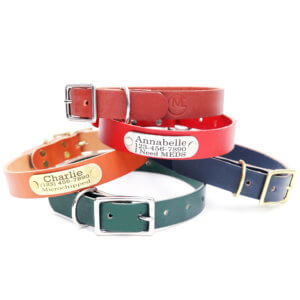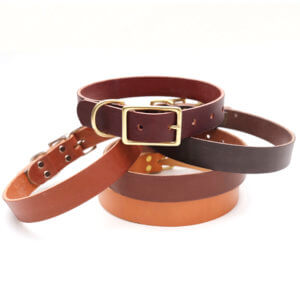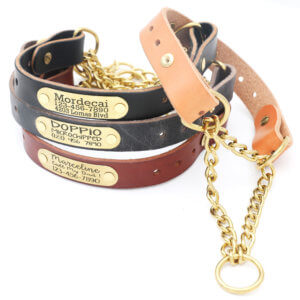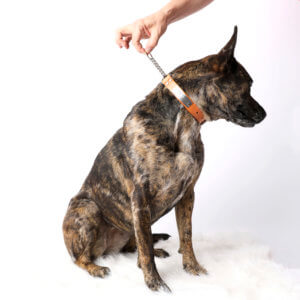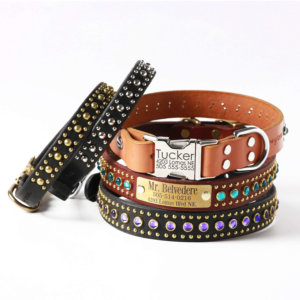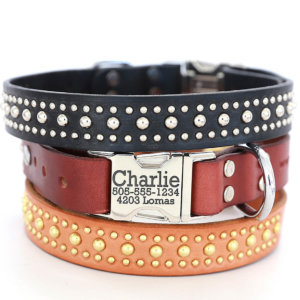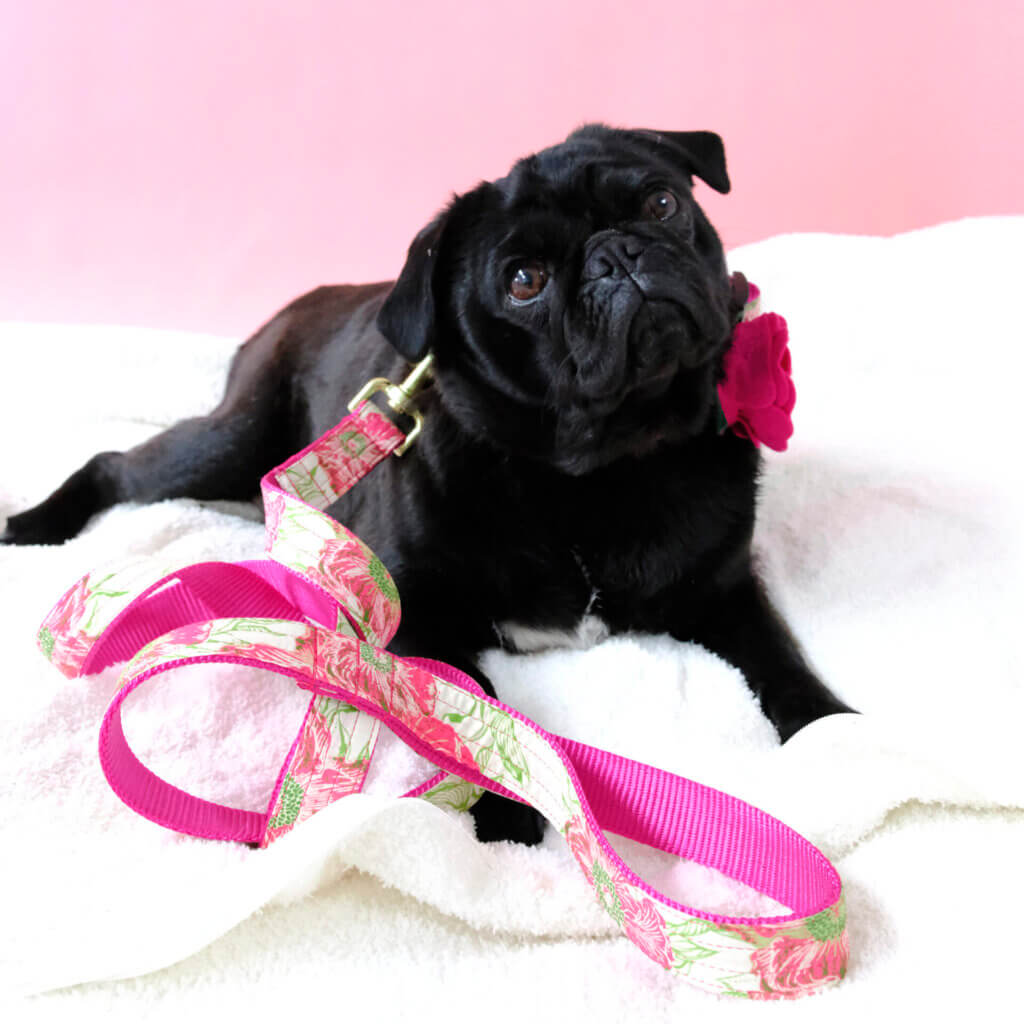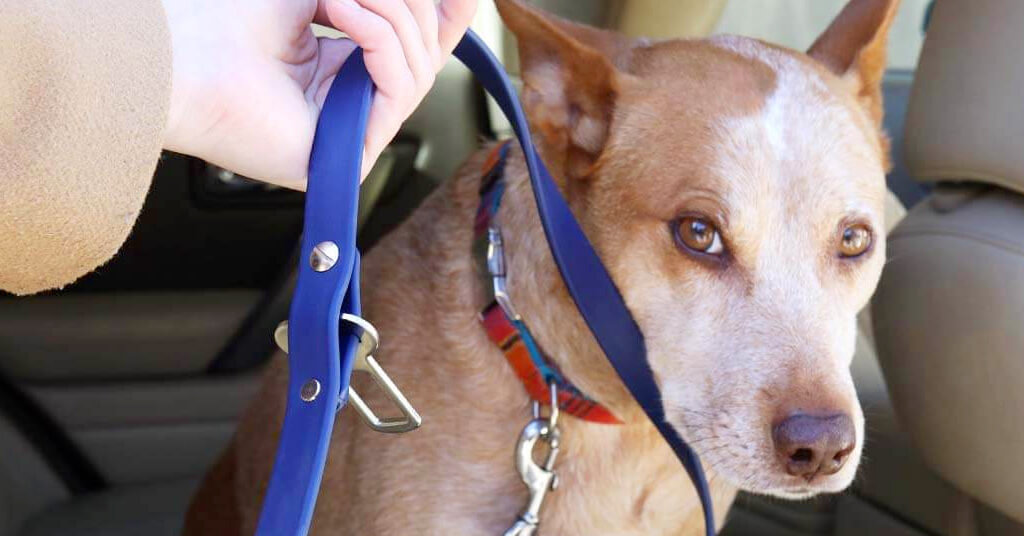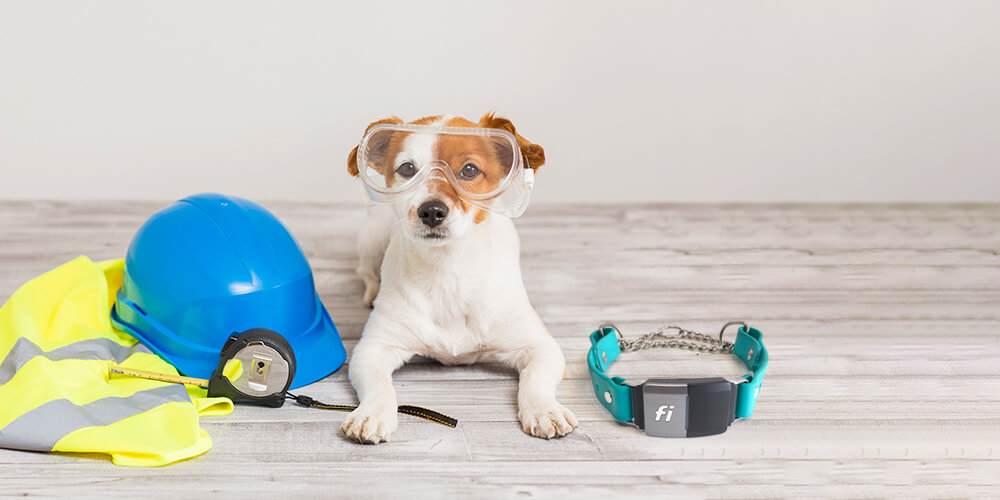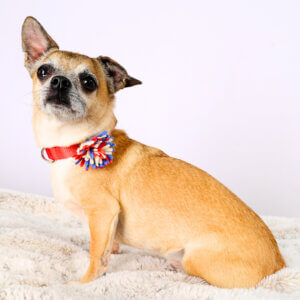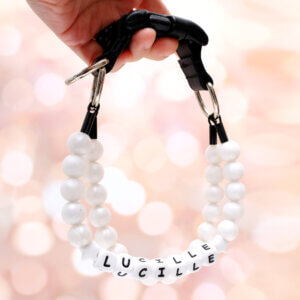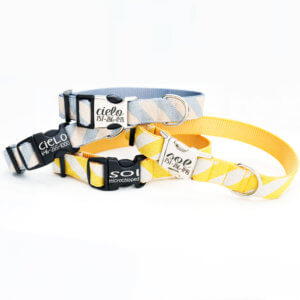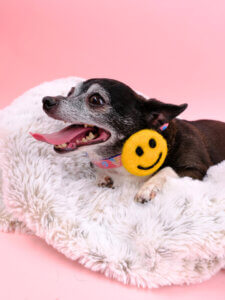Congratulations! As a first-time dog owner, you’re about to embark on an exciting journey filled with love, joy, and unforgettable moments.
You’re here because you know that a lot goes into owning a pup, regardless of if it’s your first time. You need to prepare your home to become their home and make room in your life for them. Having the essentials ASAP makes this process easier for you and them.
This guide and checklist will cover the basics of first-time dog ownership and share downloadable checklists.
- Essential Dog Items Checklist
- Preparing Your Home Checklist
- The First Month Checklist
Download Checklists
Absolute Essentials Items
Collar
Dog collars are a necessary tool in your pet parent’s arsenal. They have your dog’s identifying information on them, allowing you to take your pup out to explore the world safely.
If you’re worried about your dog’s comfort, choose the right type of collar based on factors like weight, width, and material.
Your dog should wear a collar and ID tag indoors and outdoors. Accidents happen. Doors get left open, pets run outside or get lost, and an emergency separates you from your dog—in any situation, it’s best to be prepared.
While microchips help identify a dog’s owner, a collar with an ID tag will reunite you with your beloved pet much quicker and increase your chances of bringing it home as soon as possible. When people see a loose dog without a collar, they are less likely to assume it has an owner. It also makes it harder to catch them. It can also be an important safety precaution if you have to separate your dog from another animal, whether that is an off-leash dog or another present danger.
Choosing The Right Collar
- Fit: To avoid discomfort, we recommend leaving about two fingers’ worth of room under the collar. Measure your dog’s neck size and consult our dog collar size chart.
- Collar Weight: It is also important to consider the collar’s weight for smaller dogs. Our small dog collars weigh around 6 ounces, which we find to be a good weight for smaller dogs.
- Width: For large dogs, the width of the collar is more of a concern. Wider collars distribute pressure more evenly around a dog’s neck. This is good for larger breeds, dogs with sensitive necks or trachea, dogs with respiratory issues, and pullers.
- Material: Choose a material that matches your dog’s fur and lifestyle. If you have a chewer, we recommend leather or nylon. If you have a mud or water lover, we recommend a waterproof collar with easy-to-clean biothane tech. If you want to maximize comfort, go with cotton.
- Martingale: Choose a martingale collar if your dog pulls on their collar and/or needs leash etiquette training. If your dog has a smaller head and wider neck, you may want to default to a martingale collar.
Allergies: Some dogs have metal allergies that cause dog collar rash. If this is the case, choose a different material, such as nylon, leather, or fabric.
Harness
While collars are best for everyday wear, a harness can be the safest option for dog walks and outdoor activities. The overarching point of this debate is whether a harness or collar works best depending on your dog’s personality.
Harnesses can be especially helpful for pups who are not leash-trained yet, have weak necks, or have breathing issues.
Leash
It’s always recommended that your dog be kept on a leash when outside to keep yourself, other dogs, and other people safe. Start leash training immediately to reinforce good behavior and ensure your dog remains well-behaved in public spaces.
What to consider when buying a leash:
- Length: A 6 ft leash for everyday walks is ideal, offering a balance between control and allowing your dog some freedom to sniff and explore. This length is also popular for dog training, providing enough room for your dog to move while still enabling you to maintain close control. Shorter leashes, like 4ft, are recommended for dogs that pull or jump, as they offer better control and are great for teaching puppies to stay by your side.
- Material: Nylon is the most popular leash material due to its durability and ability to maintain its shape. It’s a safe and affordable choice, but it can slip and cause rope burns if you have a strong or excitable dog that pulls or darts around. To protect your hands, consider using a leather leash, which is both soft and strong. With proper care, a leather leash can last a lifetime and prevent painful injuries. For those who prefer non-animal products, a biothane leash is an excellent alternative to leather, offering similar durability and comfort.
- Type: There are three main types of dog leashes. Standard leashes, harness leashes, and retractable leashes.
- Standard Leashes: Are usually made of nylon or leather.
Retractable Leashes: Allow dogs more freedom to explore and give owners the ability to retract the leash. While that may seem convenient, we don’t recommend retractable leashes because they reward dogs for pulling.
- Slip Lead Leashes: Combine a leash and collar in one, tightening when the dog pulls, which can be useful for training.
- Martingale Leashes: Have a loop that tightens without choking, providing more control for dogs prone to slipping out of collars. Finally, long-line leashes are used for training purposes, allowing dogs to roam while maintaining control.
Bowls
We won’t overindex too much on the perfect dog bowl. We’ll just suggest that you avoid plastic dog bowls. They can harbor bacteria, especially when they get scratched. Choose your dog bowl by the size of your dog and the length of their snout.
Dogs drink about 1 cup of water per 10 lbs of body weight in a water bowl, so ensure your dog has enough water for 24 to 48 hours.
As for training, pay attention to two things:
How quickly your dog eats. If your dog eats fast, invest in a slow feeder. Eating too fast can lead to digestion problems.
Food aggression, which is a form of resource guarding that some dogs display.
Quality Food
Your dog needs good food. When choosing dog food, consider your dog’s age and health needs, such as food sensitivities or weight management, and choose a recipe that suits its specific life stage. Opt for dog food with high-quality ingredients and a complete and balanced recipe.
Avoid foods with fillers, artificial additives, and low-quality proteins, as these can contribute to health problems over time. A diet rich in natural, wholesome ingredients can help support your dog’s immune system, promote healthy digestion, and maintain a healthy weight.
Dog Grooming Essentials
Most breeds can last about 6-8 weeks between groomings; however, this can vary depending on whether your pup has hair or fur and whether they’re double or single-coated.
Quick Coat Test: Stroke your dog’s coat against the direction of the fur. If you see a patch of skin, your dog has a single coat. However, if you notice a short layer of dense, fluffy fur, your dog is double-coated.
Dog Brush
Brushing your dog helps keep its coat shiny and healthy by removing dirt and loose hair and preventing matting. It’s also a great way to bond with your furry friend, turning grooming time into a mini spa session they’ll look forward to. Plus, regular brushing can reduce the amount of dog hair decorating your furniture, saving you from finding fur in your morning coffee.
Product recommendations:
- Dogs With Short Coats: For short coated dogs, use a rubber curry brush or a Kong Zoom Groom.
- Dogs With Long Coats: For long coated dogs, use a rake and a slicker.
Grooming professionals recommend against cutting out mats because you can injure your pet. Instead, treat it like human hair, following these two-step process:
- Use a Detangling Spray
- Brush Fur Gently
That’s it!
Dog Nail Clippers
Dog nail clippers are crucial for preventing overgrown nails, which can cause pain and mobility issues. Trim their nails every 3-4 weeks. Invest in a pair of sharp clippers, trim gradually, and reward your pup throughout. them. Make it more pleasant with treats, praise, and a calm environment—maybe even play their favorite “pupcast.”
Look for clippers with a comfortable grip, safety guard, and sharp blades for a smooth cut.
Flea And Tick Protection
Your warm and cuddly new best friend’s fur provides the perfect environment and hiding place for fleas and ticks.
The best thing you can do is schedule a flea and tick prevention appointment with your vet. Your local vet will know what issues dogs face in your area and help you develop a prevention plan.
Nexgard and Heartguard are two great solutions for the big three parasites (Fleas, ticks, and worms). Personally, we think that oral meds work better than topical medications. You don’t want to find out the hard way after trying topical medications or natural remedies that may not work.
But what if I have an indoor doggie?
You 100% should invest the $200-$400/year for medication to prevent fleas, ticks, and worms. Once you get fleas in your house, they’re extremely difficult to remove.
Dental Care
Dog dental care prevents bad breath, tooth decay, and health issues like periodontal disease, tooth loss, and infections. The gold standard for brushing your dog’s teeth is twice a day. We get it; that’s a lot, so a more reasonable target is three times a week.
Whatever frequency you choose, start your puppy early. Eventually, you want to introduce an enzymatic dog toothpaste, but you can start with a toothbrush. Absolutely DO NOT use a human toothbrush and toothpaste. Look for the VOHC Registered Seal when buying a toothbrush, toothpaste, or dental chews.
Download Checklists
Ear Cleaner
Wipes or an ear-specific solution can be very helpful in preventing fungus and infections, especially if you have a floppy-eared dog.
Grooming Wipes
Does your new best friend love playing outside and getting dirty? Deodorizing wipes can remove foul odors and keep their rear end clean. It’s an unpopular opinion, but you should always check your dog after the poop. You don’t want nuggets left on your couch, exposing people to sickness.
Dog wipes are a good alternative to frequent baths because they allow you to spot-clean without going through the whole mortifying process of a bath.
Clean their ears, butt, and paws with natural deodorizing wipes.
Here are three options we like:
- Petkin Big N’ Thick Grooming Wipes
- Nature’s Miracle Deodorizing Bath Wipes
- Dexas MudBuster Portable Dog Paw Cleaner
Dog Walking Essentials
Few activities benefit you and your dog as much as frequent walks. Of course, walks provide toileting opportunities. But they also provide exercise for you and your pup, which provides mental and physical benefits.
Poop Bags & Dispenser
Proper etiquette says always to pick up your dog’s poop, even if the mess is in your yard. Dog poop can harbor harmful bacteria and parasites, such as E. coli, salmonella, and roundworms, which can cause sickness in humans and other animals.
Here are three products we like:
- Earth Rated Dog Poop Bags (Durable & Easy To Tear Perforation)
- Mutt Mitt (Durable & 2-Ply)
- Hippo Sak Jumbo Pet Bag (Good For Big Dogs & Cat Litter)
Pro Tip: Do NOT go with the cheap option UNLESS you can confirm with multiple reviews that it’s made from durable material. You don’t want to accidentally poke your finger through the 0.99¢ bag you got from the dollar store.
Oh, and pro tip #2. Keep a roll in the car. If you have kids, keep a roll in the diaper bag and stroller. You’ll thank us later when they save the day during a surprise blowout.
Training Treats
Dog professionals use treats as positive reinforcement to encourage desired behaviors. You can, too. Treats immediately after a desired action can create a strong association between the behavior and the reward.
For treats, Dogs like tiny pieces of cooked chicken, freeze-dried liver, or specially designed training treats.
For product recommendations, try Zuke’s Mini Naturals or Wellness Soft Puppy Bites, which are easy to chew and quick to eat. Treats should be given sparingly during training, typically one small treat per correct behavior to avoid overfeeding.
A good rule is that treats should make up no more than 10% of a dog’s daily caloric intake.
Collapsible Water Bowl
If you live somewhere hot or take your dog to lots of places, a collapsible dog bowl or water blatter will be helpful.
Carabiner
If you take your dog to many places, a decent carabiner can secure your dog when you’re out hiking or at a cafe. Unfortunately, dogs like to go on mini adventures when you lose focus, like when loading your car.
Home Essentials
Dog Bed
Just like humans, dogs need a bed to call their own. A comfy bed is not only a place to sleep but also somewhere they can retreat to if they no longer feel like socializing.
What to look for in a dog bed:
- Washable (Either the whole thing or the cover)
- Durable
- Removable cover
- Waterproof
- Raised edge to rest chin
For a more expensive option, invest in a Big Barker Bed. A more affordable option with all the bells and whistles is the Majestic Pet Products Suede Bagel Dog Bed.
Dog Crate
A crate gives your dog a protected space to call their own. It’s a misconception that dogs detest crates. A crate gives your dog a sanctuary they can retreat to when they want to be alone or feel secure.
It can also prevent your dog from ingesting dangerous materials while you are not home, which can be a serious health risk. Never use the crate as punishment, as it’s supposed to be a safe place. You want a crate big enough for your dog to stand up and turn around comfortably.
Crate Mat or Liner
If your dog is a chewer or likes to dig up its bedding, you should look at a Primo Pad. Honestly, multiple cheap blankets you can wash and aren’t worried about destroying are a good bet.
Doorway Gate
A doorway gate allows your dog to move around your home in a designated area. This is an important part of house training, helping your dog understand what parts of the house they can access.
If you’re looking for a durable gate that won’t budge, try these options:
- Regalo Baby Gate (Pressure mounted and sturdy)
- Carlson Pet Products Design Studio Metal Walk-Thru Gate (Easy installation)
Toys
While physical play is best done outside, relaxing and engaging mental stimulation can happen inside.
Dogs love various toys, such as chew, fetch, puzzle, and plush toys. The best ones usually match their play style and preferences. Durable options like Kong Toys or Nylabones are great for chewers. Fetch enthusiasts adore balls like Chuckit! or Frisbees. Puzzles, like those from Outward Hound, keep their minds sharp.
Avoid small toys for large dogs to prevent choking hazards, and steer clear of easily destructible toys for aggressive chewers. Rotate toys regularly to keep them exciting and prevent boredom.
Odor Eliminator
Accidents happen, so get a good odor-elimination set made specifically for pets. The first step in keeping bad odors away from your home is to wash your dog. Wash all blankets, dog bed covers, couch slipcovers, etc., with some frequency.
Set up an air purifier in problem areas. If you have cats, place the purifier near their litter box. Baking soda does a good job of deodorizing carpets. Just make sure you don’t overdo it and give your pet an overexposure reaction.
First Aid Kit
We can’t emphasize enough the importance of being prepared for potential injuries, especially if you go hiking with your dogs.
Here’s a comprehensive list of items you may consider investing in:
- Gauze Pads
- Vet Wrap/Coban Wrap
- Adhesive Bandages
- Antiseptic Wipes
- Antibiotic Ointment (Neosporin)
- Hydrogen Peroxide
- Tweezers
- Scissors
- Cotton Balls
- Saline Solution
- Bleed Stop Powder
- EMT Gel or Spray
- Kwik Stop Powder (for nail trims)
- Veterinary Formula Antiseptic and
- Anti-Fungal Spray
- Benadryl (make sure to know the correct dosage)
- Dog Aspirin
- Zyrtec or Claritin (for allergies)
- Cerenia (anti-nausea, prescription)
- Mirtazapine (appetite stimulant, prescription)
- Dog Boots/Socks
- Baby Socks (as a cheaper alternative)
- Disposable Booties
- Soft Muzzle
Obviously, you don’t need everything in all four lists. Read the lists and choose the most important ones for your dog and home.
Preparing Your Home
After adding some of the above items to your shopping list, don’t forget to prepare your home. Make this a collaborative effort for everyone in your household.
- Wrap exposed chords with cord covers and put cords away when not in use.
Invest in a trash can with a pet-proof lid.
- Purchase storage cases that can preferably be stored above ground.
- Buy chew toys to ease anxiety (and keep valuable items from getting chewed on!)
- Remove food from counters and put it in cabinets.
- Remove toxic houseplants that are harmful to pets.
- Fence your yard with a dog fence, wood, chain link, or vinyl fence.
- Choose spots in your home for your dog bed, eating station, and play areas.
- Look for the following items around your house and move them out of the way.
- Shoes
- Personal care products
- Cleaning products
- Plastic bags
- Sharp objects
- Small, swallowable objects
- Charging cables
- Important documents
- Block off your fireplace with a screen or grate.
- Keep expensive items like vases and table lamps away from the edge.
Download Checklists
The First Month
- Potty Training: Start potty training ASAP by taking your pup potty after eating, drinking, waking, and before bed.
- Parasite Prevention: Schedule an appointment with a vet to discuss options for preventing ticks, fleas, and worms.
- Vaccinations: Schedule your first vet appointment within the first month to start vaccinations. Dogs need core vaccines for rabies, distemper, parvovirus, adenovirus, and canine parainfluenza.
- Microchipping: Even if your dog isn’t an escape artist, get it microchipped. If it gets away without its collar, you’ll have an increased chance of its safe return.
- Training Classes: There’s no shame in asking for help with dog training. Especially if you’re a first-time dog owner or if you live a busy work lifestyle.
Licensing: Some states require that all dogs be licensed and vaccinated against rabies.
- Socialization: Dogs not socialized early may be reactive to other canines or people they don’t know. The first step is getting your dog to act neutral around other dogs. That doesn’t necessarily mean tons of interaction!
- Pet Insurance: Pet insurance makes really hard decisions much easier. Enroll your dog early to get the best rate.
- Savings Account: Owning a pet is not cheap! Start stashing money away in a savings account so you have money for unexpected expenses that insurance won’t cover.
Prepare Your Dog With Mimi Green
As a new dog owner, we know you want to give your new pup the best of everything. If you want to give your dog the best collars, harnesses, and leashes, then Mimi Green should be your first choice.

